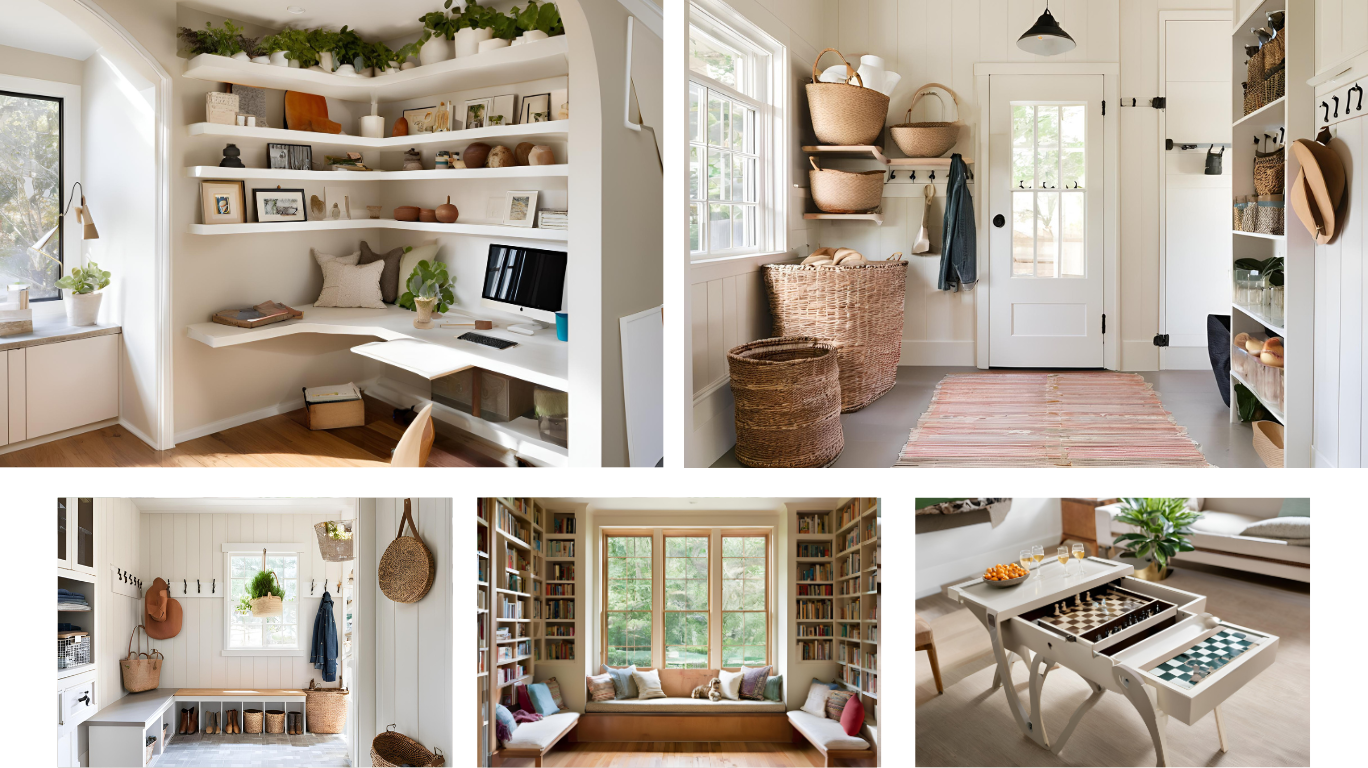
Small House Design: 20 Ideas for Tiny Home & Small Space Living
20 Small house ideas for tiny home living! Get inspiration for maximizing small spaces with clever storage & design tips. Transform your small house into a stylish home! Always small house can be challenge to make proper and elegant décor with attractive ways with limited space. But you always thinking how to maximize space, specially small living room, living area even with modern or traditional home designs with low cost, cheap budget but worthy design process.
20 Ideas for Tiny Home & Small Living Space
1. Downsize Your Dining Table
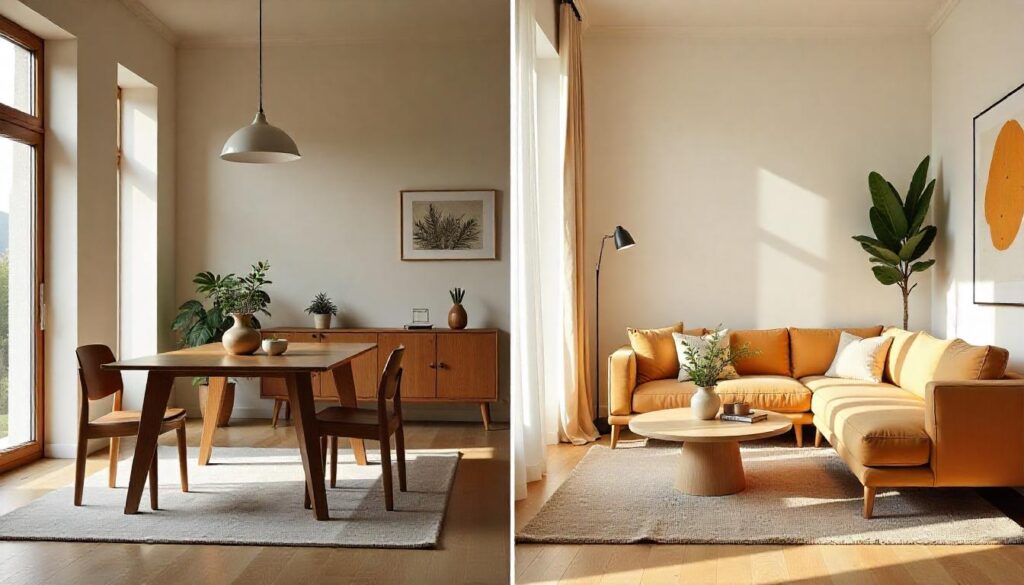
If you’re not hosting large gatherings often, a bulky dining table might be wasting space. Instead, opt for a smaller table that suits everyday use. If you think maximize your space, you can do a chic compact setup with a freestanding banquette and three chairs, making the area look cozy yet functional. This choice not only saves space but also encourages intentional, more intimate meals. Swapping your oversized furniture for a practical option can instantly open up your small dining area. That can save lot of space that aria.
2. Utilize Your Windows
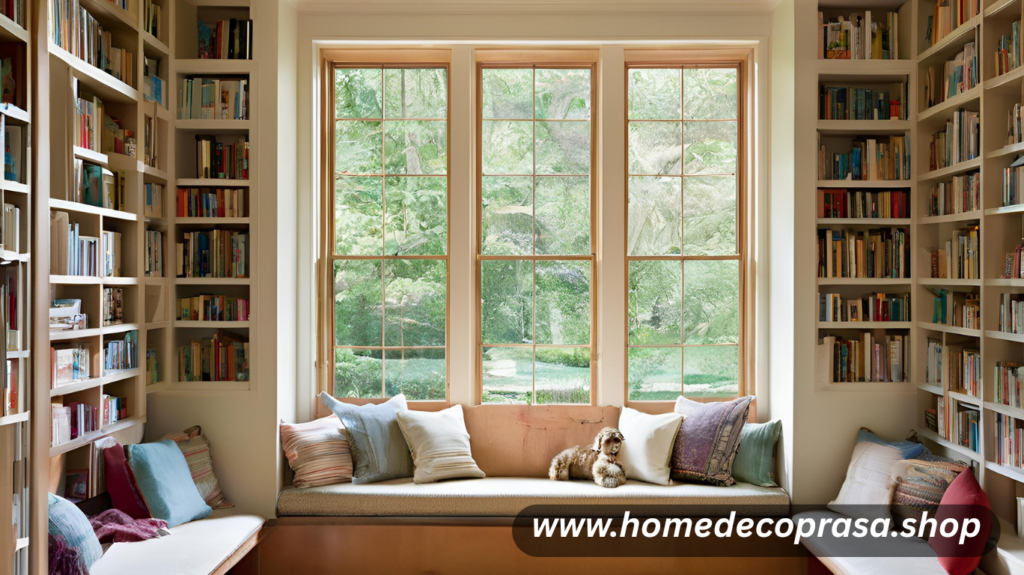
Windows offer more than just a view—they can be functional design elements in a small home. In Serena Dugan’s Shelter Island home, window seats double as guest seating, while narrow bookshelves installed above save precious floor space. This layout provides both comfort and storage without crowding the room. It’s a smart way to maximize vertical space while creating cozy nooks that feel curated and useful for small rooms where space is at a premium. it is cost affordable one of the best house design ideas.
3. Use Multifunctional Furniture
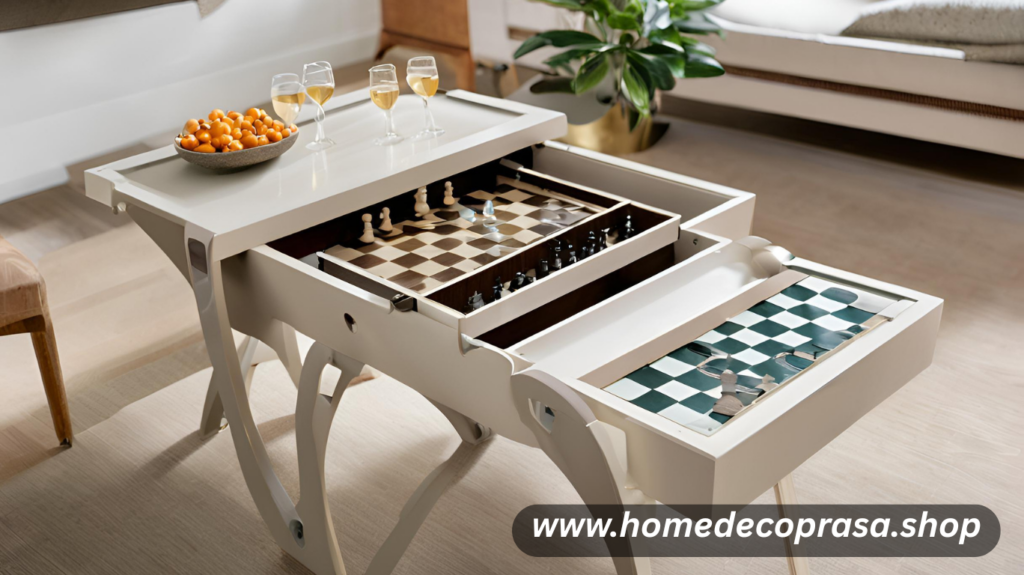
Multifunctional furniture can completely change how you use space in your home. In the 2024 Whole Home project, MA Allen designed a game room where a foldable chess table adds versatility and a chic touch. Instead of cluttering the room with extra pieces, each item serves more than one purpose. Daybeds act as seating and sleeping areas, and stools are both stylish and functional, perfect for a house on wheels. These smart design decisions allow you to adapt your space based on your changing needs.
4. Choose Benches, Not Chairs
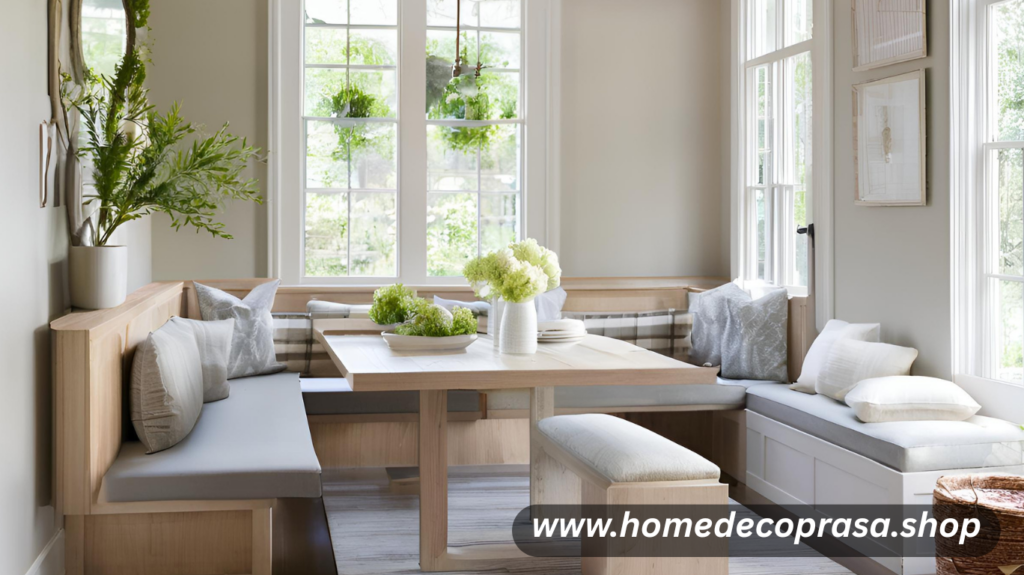
Small home plans always challenging maximize space and create cozy look. Benches can make a small dining area appear more spacious by eliminating bulky chair backs that interrupt sightlines. In designer Wendy Labrum’s project, benches blend seamlessly with the décor, offering a cleaner and more streamlined appearance. They’re also great for accommodating extra guests when needed. This simple furniture swap frees up both physical and visual space, helping small homes feel more open without compromising on comfort or style at the dining table. with this way, you make the room feel confirmable and friendly with space efficiently and save extra space.
5. Carve Out a Nook
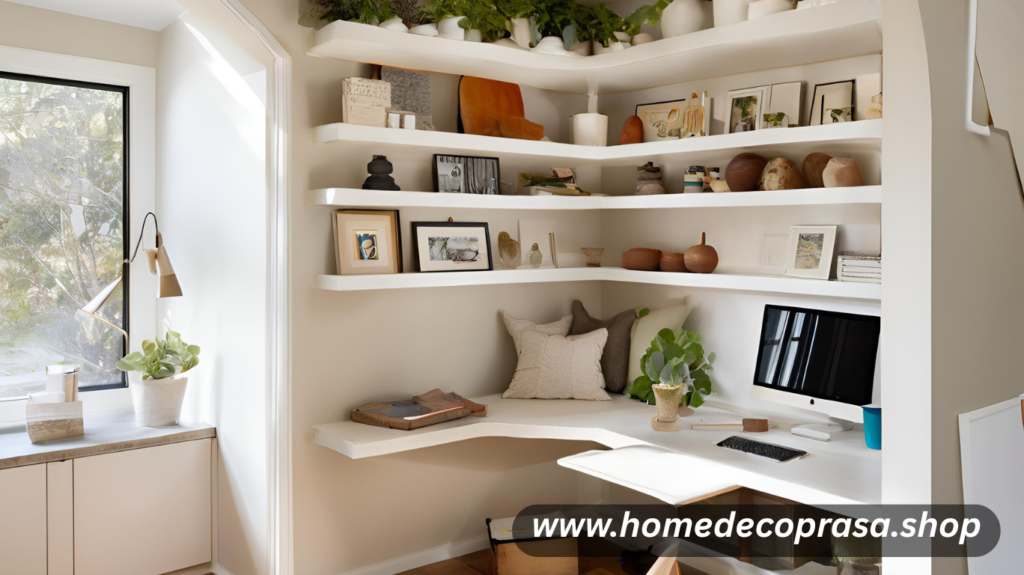
Even the tiniest corners can serve a purpose in small homes. Designer Kelly Hurliman transformed an unused alcove into a fully functional workspace. With the addition of shelves and artwork, it feels intentional rather than like an afterthought. These carved-out nooks are ideal for home offices or reading areas, especially in apartments where space is limited. By using vertical space and keeping the setup minimal, you create functionality while maintaining your room’s aesthetic.
6. Keep Storage Up High
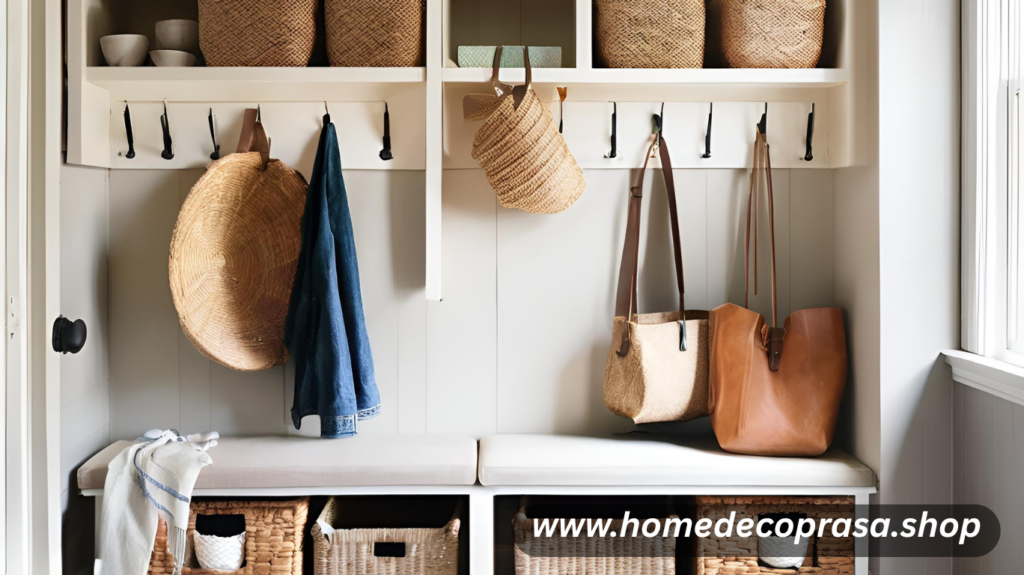
Once you planning to designing a small house, Ideas to make keep storage up high. To make your small space feel less crowded, keep storage off the floor and up high. Designer Amber Lewis achieved this in a mudroom by using wall-mounted hooks and a basket under a table. This tactic helps the eye travel without visual interruptions, making the area appear larger. It also keeps necessities close at hand without turning the floor into a clutter zone. Elevating storage clears space and adds a feeling of openness.
7. Make Use of All Corners
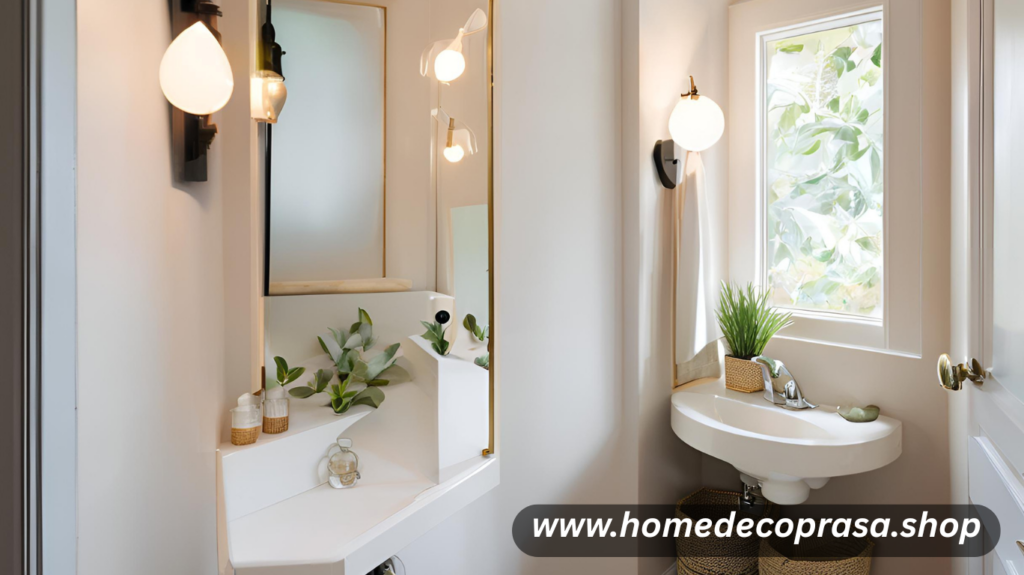
Corners often go underutilized in home design, especially in tight spaces. Designer Alexandra Kaehler turned a bathroom corner into a functional spot by installing a compact sink, adding both style and space-saving benefits. This smart choice frees up room for movement and avoids overcrowding. Utilizing corners effectively allows you to add necessary features without overwhelming the area. Small home design is all about maximizing the square footage you do have, down to the last inch. In this way you can use of space even you don’t think much to reduce. But you have to carefully consider the house floor plan makeover also before you do those changes.
8. Put Up Open, Glass Shelves
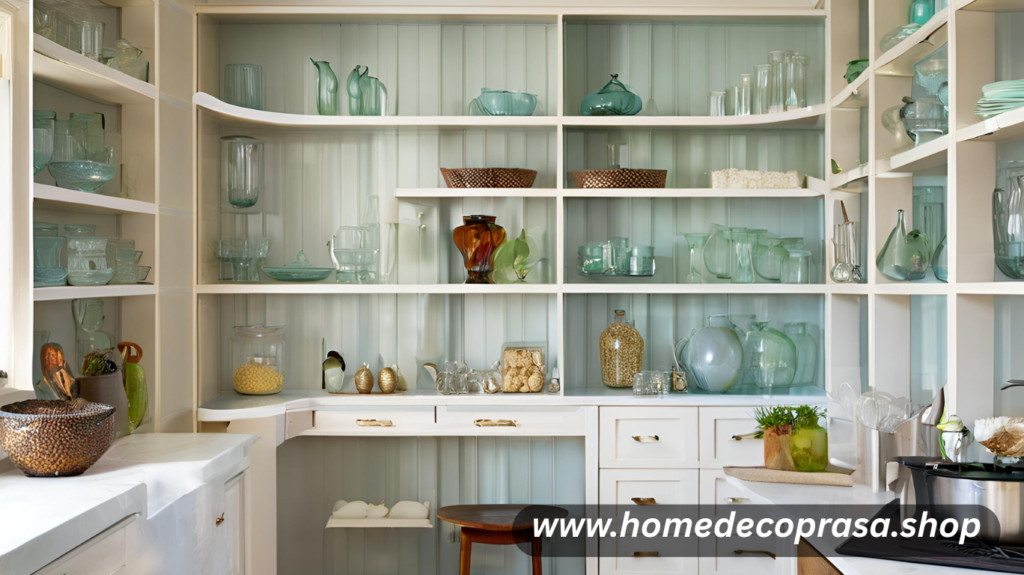
Open shelving can visually expand a small room, especially when using glass. Serena Dugan’s design showcases how shelves can provide storage while minimizing visual bulk. Glass shelves reflect light and create an airy look, helping the room feel less cramped. They’re great for showcasing decorative items, too. However, this strategy works best in tidy homes, as clutter can defeat the purpose. Choose this option to combine style, function, and square foot space-saving benefits effortlessly. This method ideal for small house design
9. Build Into an Existing Niche
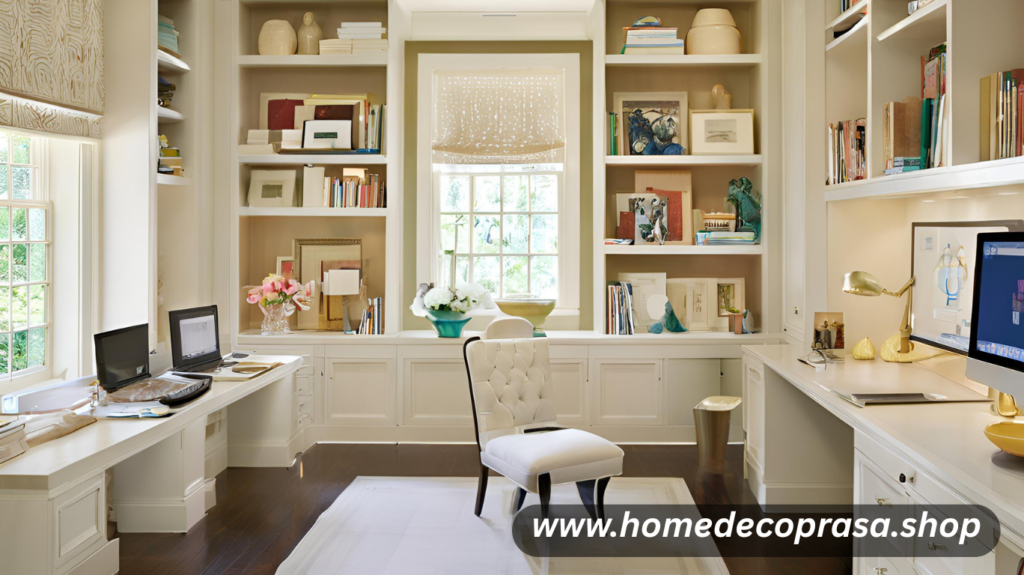
Every awkward niche in your home is a design opportunity. In a home by Suzanne Kasler, a recessed archway was transformed into a stylish workstation. Instead of wasting this space or covering it, a desk was added to make it useful. Built-ins like these make the most of your layout, especially in older homes with odd corners. They blend seamlessly and help eliminate the need for extra furniture, freeing up surrounding floor space.
10. Focus on Your Kitchen Storage in tiny house
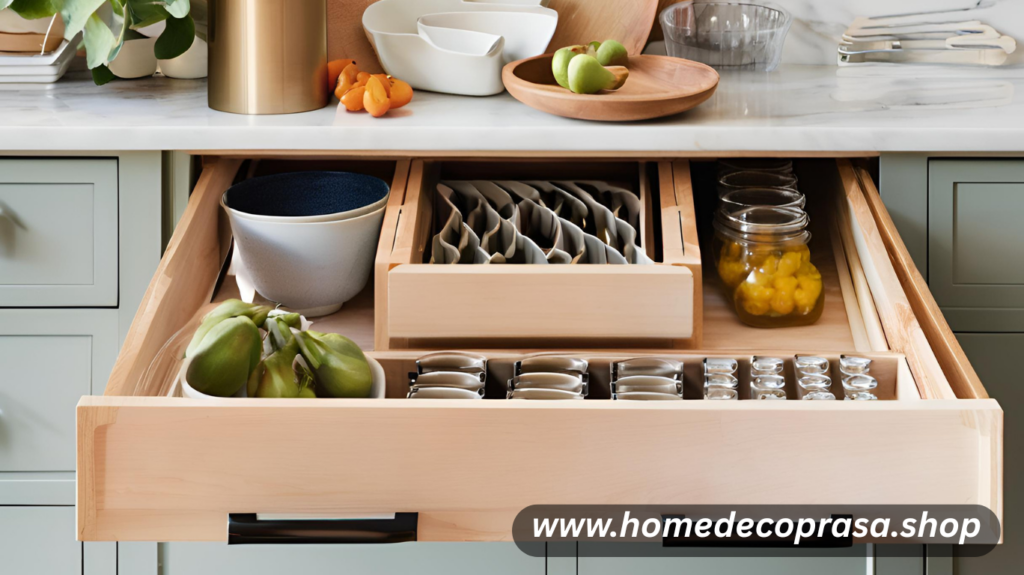
Small Kitchen in small homes demand smart storage solutions. Designer Kelsey McGregor installed features like peg drawer systems and pull-out corner organizers to maximize functionality. These tools make it easier to store lots of kitchenware out of sight, keeping counters clean and clutter-free. Closed drawers for heavy items and open shelves for daily-use pieces create the perfect balance. When every inch of space counts, organizing your kitchen efficiently helps maintain a tidy and stylish cooking area.
11. Install Pocket Doors

Pocket doors are a genius space-saving solution for small homes. Unlike traditional doors that swing open and take up room, pocket doors slide into the wall, freeing up valuable square foot floor space. Designer Laura Hodges used them in a powder room to maximize usability and create a chic atmosphere. They’re perfect for tight bathrooms, closets, or pantries. Besides saving space, they also offer a sleek, modern look. Installing pocket doors can open up tight areas and add a functional, elegant touch.
12. Use a Pedestal or Wall-Mounted Sink
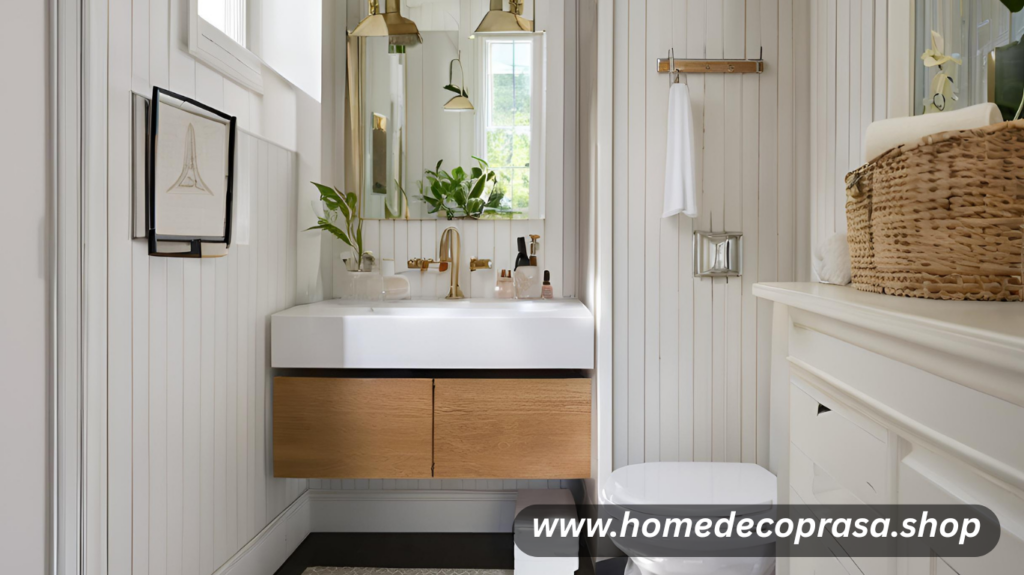
In small bathrooms, number of vanities can overwhelm the space. Instead, opt for a pedestal or wall-mounted sink like designer Kristina Phillips used in a narrow powder room. These slim fixtures create a feeling of openness and make it easier to move around. They also allow for extra storage options underneath. Whether you’re going minimalist or just need more room, a narrow sink helps maintain functionality while visually expanding a tiny bathroom.
13. Paint the Floors

When square footage is limited, visual tricks can make a big impact. Designer Charlotte Barnes painted the floors in a narrow hallway to add interest and draw the eye forward. This creates the illusion of a longer, more spacious area. Painted floors are also a budget-friendly way to refresh a compact room without adding clutter. Choose light or patterned designs to brighten up the space and make it feel larger than it actually is, adding a chic element.
14. Keep It Neutral
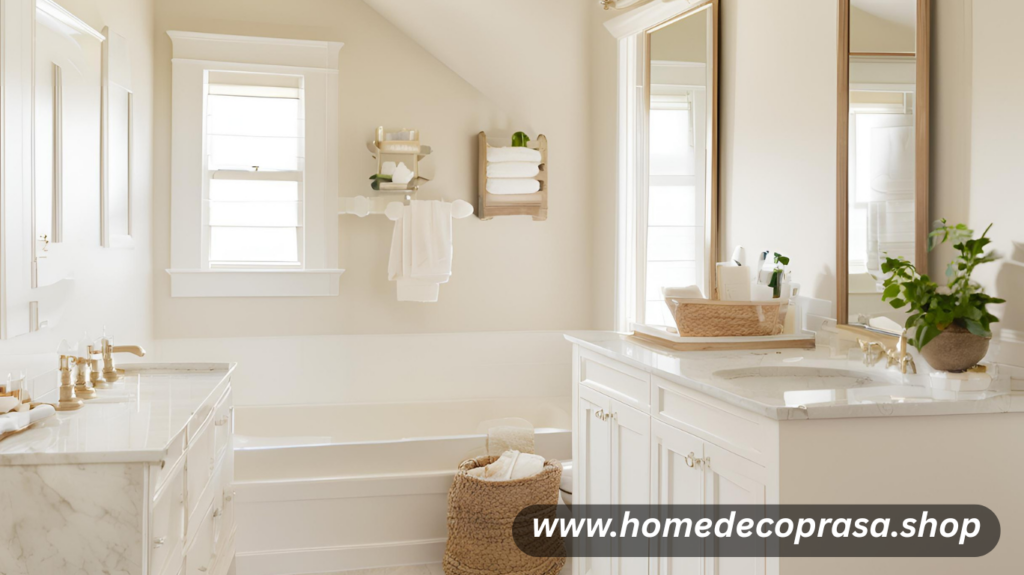
A neutral palette helps small rooms feel light and expansive. In designer Avery Cox’s bathroom design, soft cream walls and simple decor make the space feel serene rather than cramped. Avoiding heavy colors or busy patterns can prevent the room from feeling boxed in. Neutrals like white, beige, and light gray reflect more light, which also contributes to an open atmosphere. It’s a classic trick that works in nearly every room, especially in small homes.
15. Hang a Mirror
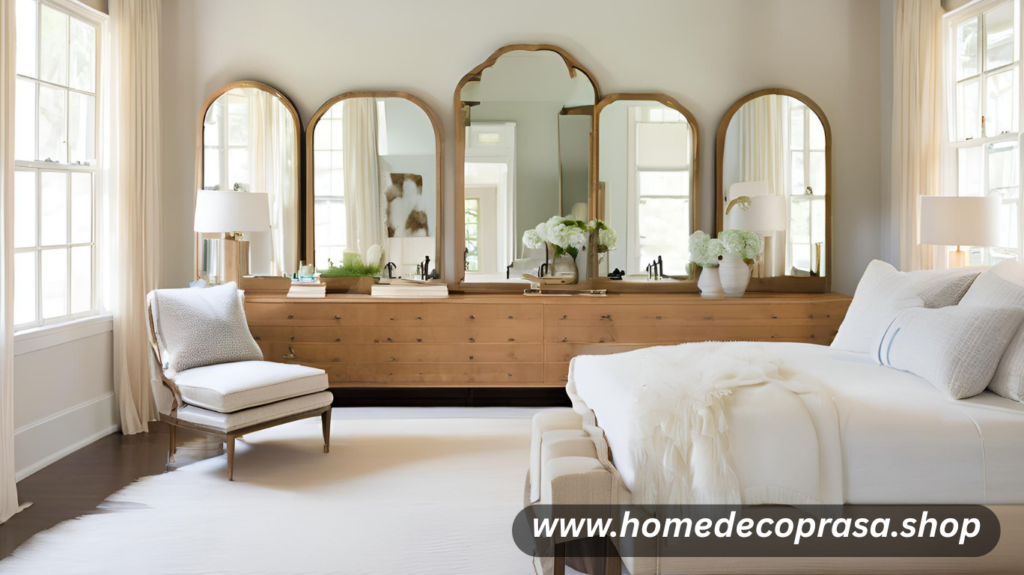
Mirrors reflect light and can make a room feel twice as big. In designer Marie Flanigan’s project, a large mirror brightens up a small bedroom and creates depth. Strategically placing a mirror across from a window enhances this effect by bouncing natural light around the space. Mirrors also work well in hallways, bathrooms, and entryways. It’s a simple yet powerful design move that instantly opens up your home and enhances its aesthetic.
16. Buy Leggy Furniture
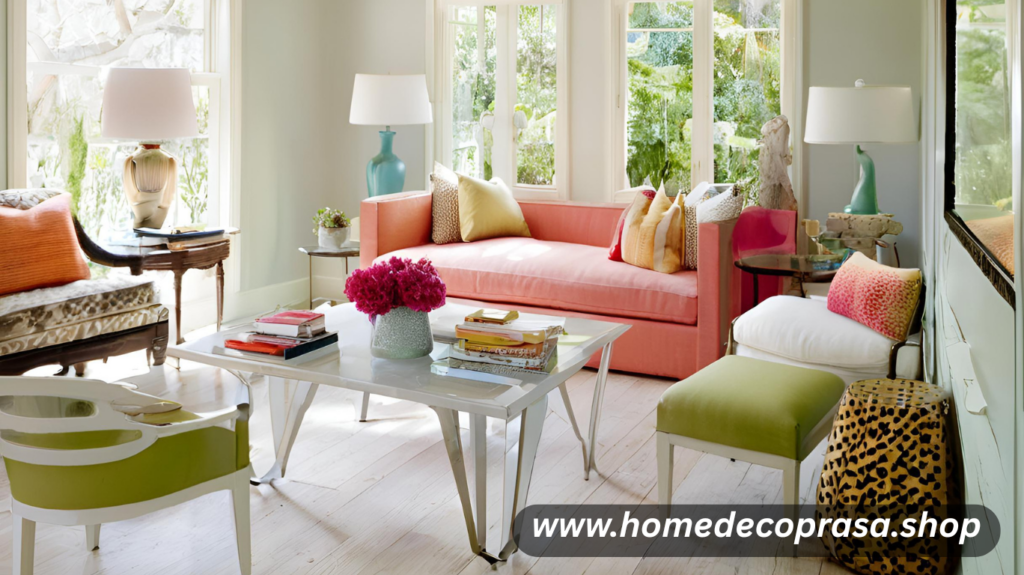
Choose furniture with exposed legs to give the illusion of more floor space. Designer Mark Lavender used a leggy table in a small room to make it feel less heavy. This type of furniture allows light and air to flow underneath, which visually expands the space. It’s a great strategy for living rooms, bedrooms, and entryways where lots of furniture would feel overpowering. Opt for sleek, elevated designs to keep things open and airy.
17. Use Built-In Shelving

Built-ins are perfect for small homes because they eliminate the need for number of furniture and contribute to a stylish makeover. Designer Matthew Bees added custom shelving to maximize vertical space in a compact room. Built-ins can be tailored to fit awkward walls or corners and provide tons of storage without taking up floor area. Whether it’s for books, décor, or essentials, they blend seamlessly into the room. Smart built-ins help reduce clutter and streamline your home’s layout beautifully.
18. Embrace Natural Light
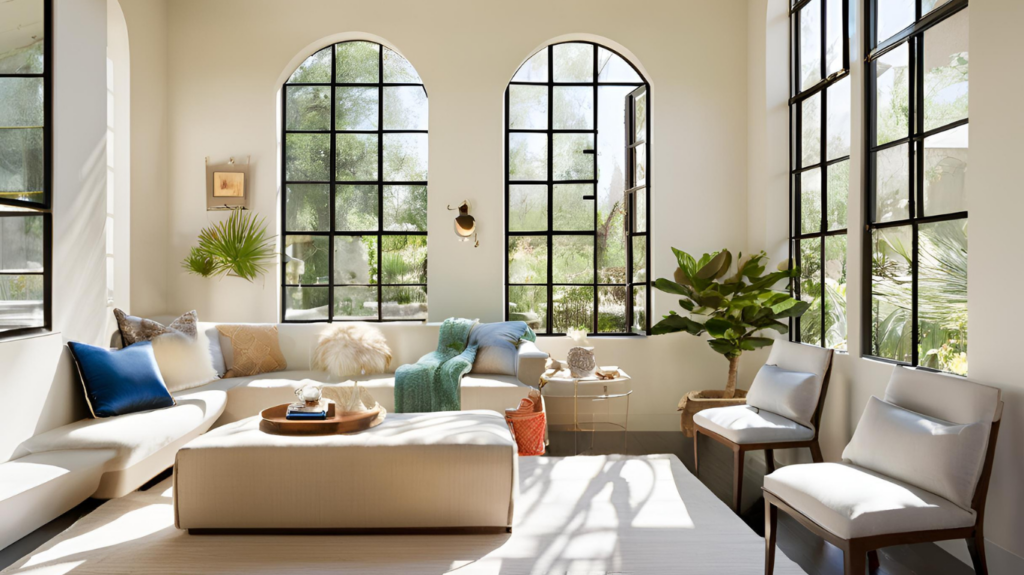
Natural light is one of the best tools to make a space feel bigger and more chic. Designer Marcus Mohon used oversized windows in a small sitting area to create a bright, open feel. Avoid heavy curtains and opt for sheer or no window treatments to let in as much daylight as possible. Mirrors and light-colored walls enhance the effect even more. A well-lit room feels less confined and much more inviting, making this a top tip for small homes and house on wheels.
19. Use Folding or Stackable Furniture
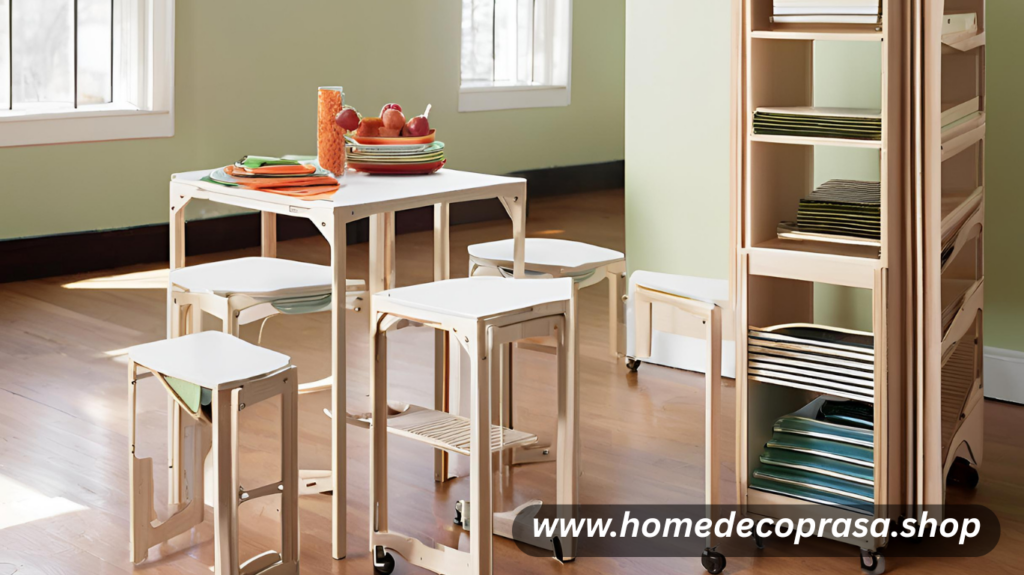
Furniture that folds away or stacks is perfect for compact living. Designer Alvin Wayne used collapsible tables and stackable stools to keep his space flexible. These pieces are ideal for small apartments or multipurpose rooms, allowing you to switch between uses without constantly rearranging. Store them easily when not in use and pull them out when needed for a chic makeover. It’s a practical solution for maximizing your square footage while keeping your home stylish and functional.
20. Install Wall-Mounted Lighting

Free up precious surface space by installing sconces or wall-mounted lights instead of using floor or table lamps. Designer Zoë Feldman used this technique in a small bedroom to keep nightstands clear and tidy. Wall-mounted lighting also adds a modern, streamlined look to the room. With less clutter and more functional illumination, this simple switch enhances both form and function. It’s especially useful in small bedrooms, hallways, and reading nooks.
Discover 20 creative ideas for tiny home and small living space design, featuring smart configuration, open floor plan concepts, and stylish touches by designer Liz Dutton. From custom-made furniture like a sleeper sofa to turning compact areas into a cozy guest bedroom, explore how to make your bungalow more livable. Get inspired with clever renovation tips, charming exterior upgrades, and the beauty of living tiny with intention and comfort.
We believe this article is especially helpful for people exploring the tiny house living concept and looking for fresh ideas for small space and storage solutions to enhance their small house plans.
FAQs – 20 Small Home Ideas, Interior Design & Décor
1. How can I decorate a small home on a tight budget?
You can use DIY décor, thrifted furniture, multi-functional pieces, and creative storage hacks to decorate a small home affordably.
2. What are some minimalist interior design ideas for small houses?
Keep furniture minimal, use neutral tones, maximize natural light, and opt for built-in storage to create a clean and uncluttered look.
3. How do I make my small house feel bigger?
Use mirrors to reflect light, choose light colors for walls, utilize vertical space for storage, and keep rooms open and airy.
4. What is the best furniture for small spaces?
Opt for space-saving furniture like foldable tables, wall-mounted shelves, sofa beds, and furniture with hidden storage compartments.
5. How can I decorate a small home using Pinterest ideas?
Search for boards like “small space decor” or “tiny home hacks” for inspiration, then adapt ideas using items from local stores or DIY methods.
6. What are some smart storage ideas for small homes?
Use under-bed storage, hanging organizers, wall-mounted racks, over-the-door hooks, and furniture that doubles as storage.
7. Can I design a modern interior in a small house?
Yes! Choose sleek furniture, clean lines, minimal color palettes, and incorporate technology or modern lighting to create a contemporary look.
8. How do I decorate a 2-bedroom small house?
Stick to a cohesive color scheme, use multi-purpose furniture, add vertical storage, and ensure each room has functional space without clutter.
9. What are the best paint colors for small homes?
Light shades like white, beige, soft pastels, and cool grays make spaces feel larger and brighter.
10. How do I make my small home cozy?
Use warm lighting, soft textiles like rugs and throws, earthy color tones, and personal touches like photos and plants.
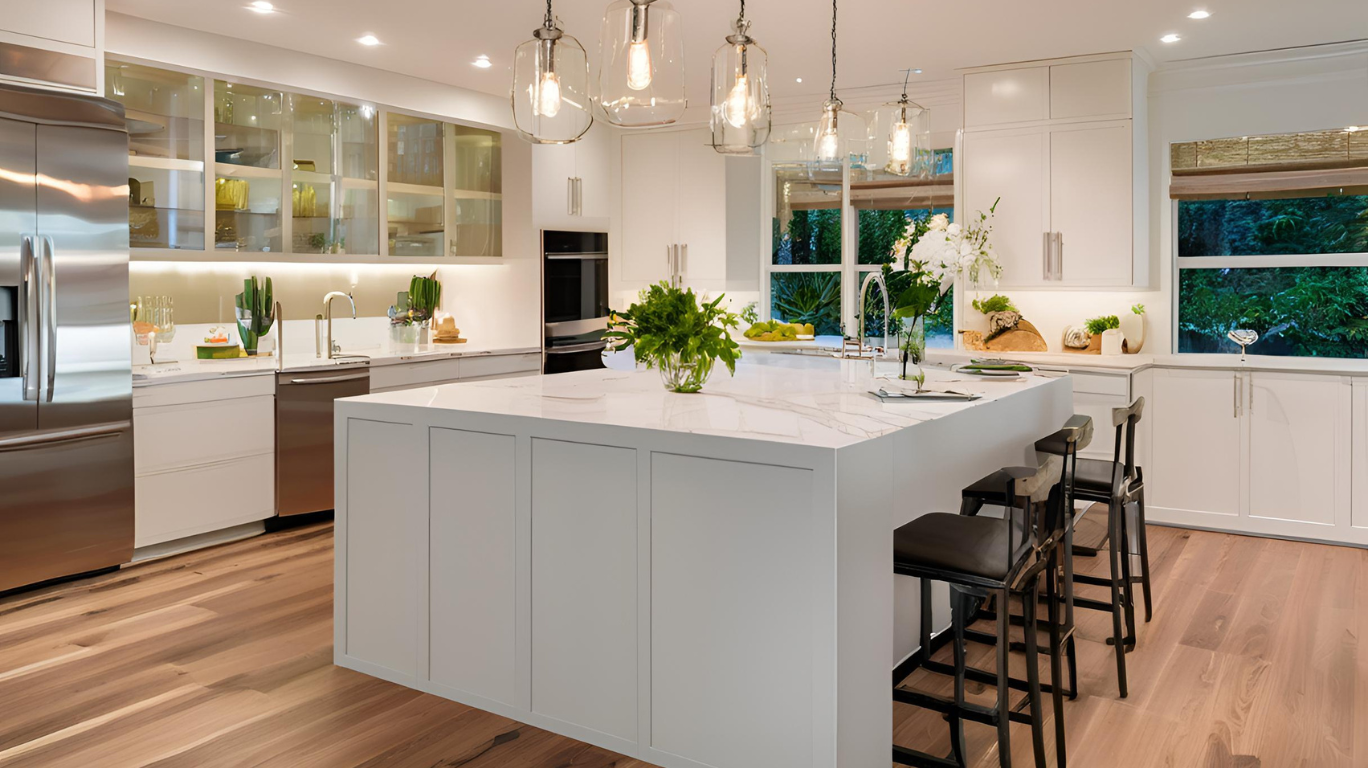
10 Open Kitchen Ideas to Maximize Space and Style
Introduction
Open kitchen designs have become very popular in modern homes. They have changed the traditional cooking area into a main place for socializing. With an open plan kitchen living room, family and friends can easily gather while meals are being cooked, making both connection and practicality better.
In these layouts, making the most of space and style is crucial. A well-designed open kitchen not only serves practical purposes but also greatly adds to the overall look of your home.
In this article, we will explore 12 innovative open kitchen ideas that enhance both functionality and visual appeal. These concepts cater to various needs, from small open kitchen designs in compact spaces to stylish solutions for larger homes.
1. Embrace an L-Shaped Layout with a Stylish Peninsula
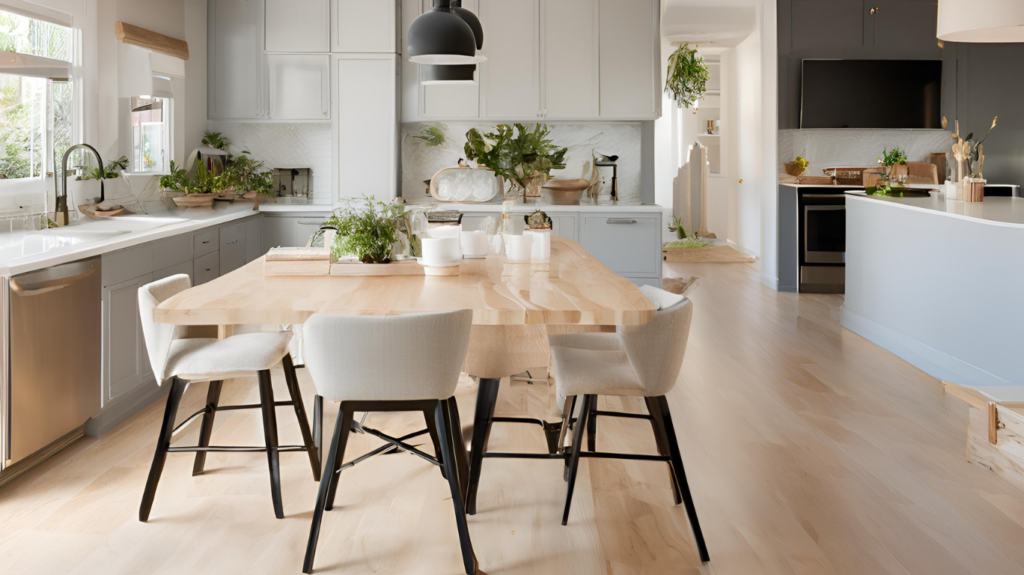
An L-shaped open kitchen design is a fantastic choice for maximizing space while creating a warm and inviting environment for cooking and entertaining. This layout effectively uses two walls, providing plenty of room for movement and interaction with family and guests. Here are some key benefits:
- Optimized Workflow: With essential work areas positioned along the two sides, cooking becomes efficient and enjoyable.
- Flexible Space: The open corner creates an inviting atmosphere, perfect for social gatherings.
Adding a stylish peninsula to your design enhances both functionality and aesthetics. This focal point serves multiple purposes:
- Additional Seating: A peninsula can accommodate bar stools, offering casual dining options without overwhelming the space.
- Expanded Work Surface: It provides extra room for meal prep or serving, enriching your culinary experience.
By incorporating these elements, you not only improve the usability of your kitchen but also enhance its visual appeal, making it a central gathering place in your home.
2. Create Visual Flow with Monochromatic Color Schemes
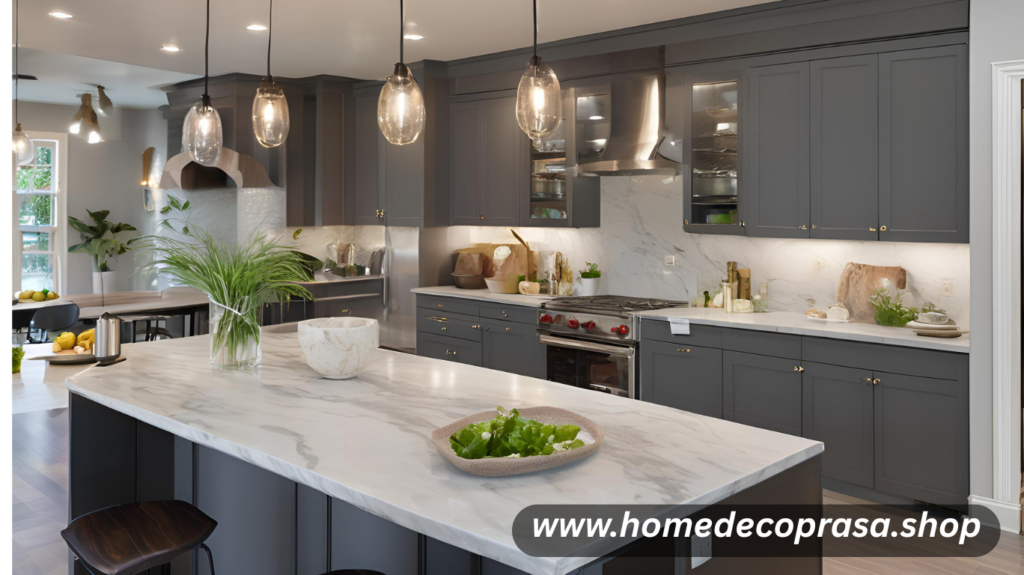
Using monochromatic color schemes in an open concept kitchen creates a harmonious look that enhances the connection to adjoining spaces, such as the living room. A cohesive palette fosters a seamless transition, making both areas feel larger and more inviting.
Effective Monochromatic Color Examples:
- Shades of White: Soft whites on cabinetry paired with slightly warmer white walls can reflect light, creating an airy feeling.
- Varying Grays: Light gray countertops combined with darker gray cabinetry add depth while maintaining a unified appearance.
Consider integrating textures as well; for instance, matte finishes can contrast beautifully with glossy tiles. This approach not only adds visual interest but also promotes a serene atmosphere in your open kitchen and living room space.
3. Maximize Natural Light by Connecting Indoors with Outdoors
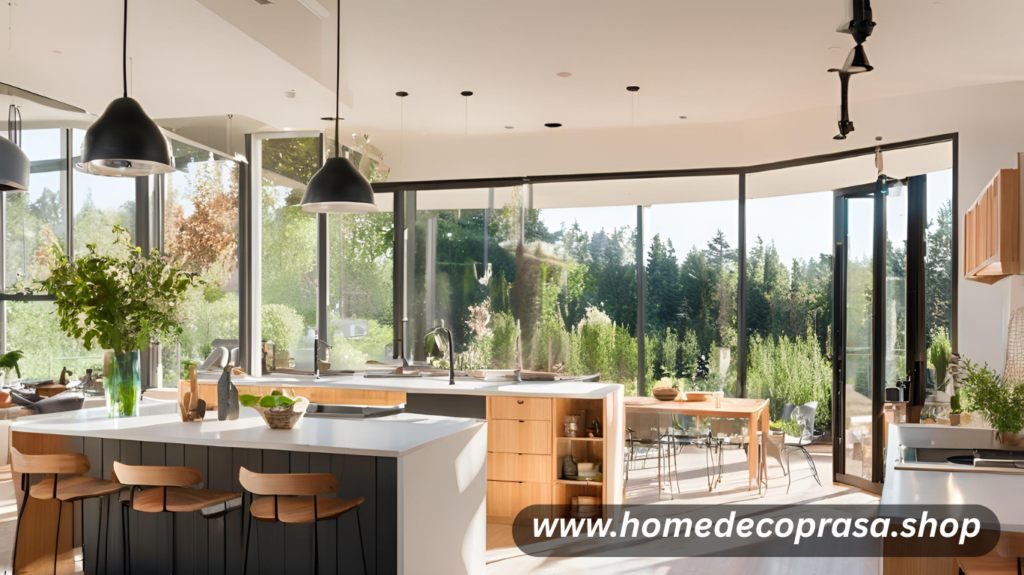
Natural light plays a crucial role in transforming small kitchens into bright and inviting spaces. When natural light floods in, it not only enhances the ambiance but also creates an illusion of depth, making the area feel more expansive.
To establish a strong indoor-outdoor connection, consider the following ideas:
- Install Large Sliding Glass Doors: These provide easy access to outdoor areas while allowing sunlight to pour into your kitchen.
- Strategically Place Windows: Enhance visibility and airflow; opt for larger windows or even skylights to maximize daylight exposure.
- Use Glass Elements: Incorporate glass walls or partitions that maintain an open feel while connecting different spaces.
Bringing nature indoors through these features can elevate the aesthetic appeal of your kitchen while ensuring it remains functional and welcoming.
4. Incorporate Open Shelving for Both Storage and Display
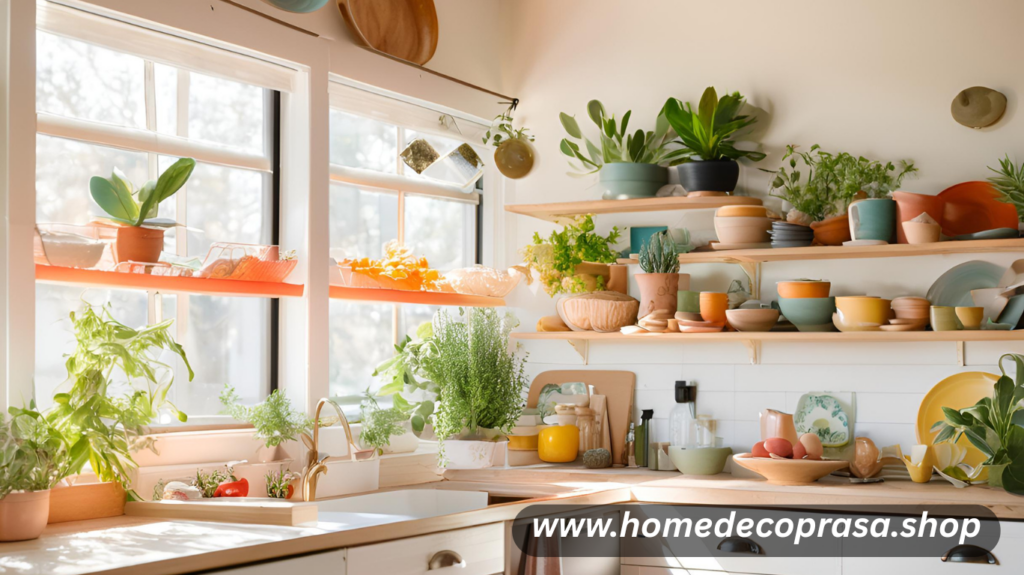
Open shelving in kitchen design serves as a versatile solution, blending functionality with style. This feature allows you to:
- Showcase Dishware: Display your favorite dishware, glassware, or decorative items, adding personality to the space.
- Access Essentials Easily: Keep frequently used items within reach, simplifying meal prep and cooking.
Styling open shelves effectively requires a balance between aesthetics and practicality. Consider these tips:
- Layering: Mix items of different heights and materials to create visual interest. Place taller items at the back and shorter ones in front.
- Color Coordination: Use a cohesive color scheme to unify the display. Group similar colors or patterns together for an organized look.
- Functional Decor: Incorporate functional pieces like stylish storage baskets or jars to maintain a tidy appearance.
Open kitchen models benefit from this design choice by appearing more spacious and inviting, offering both utility and charm.
5. Add Architectural Interest with Moldings and Paneling
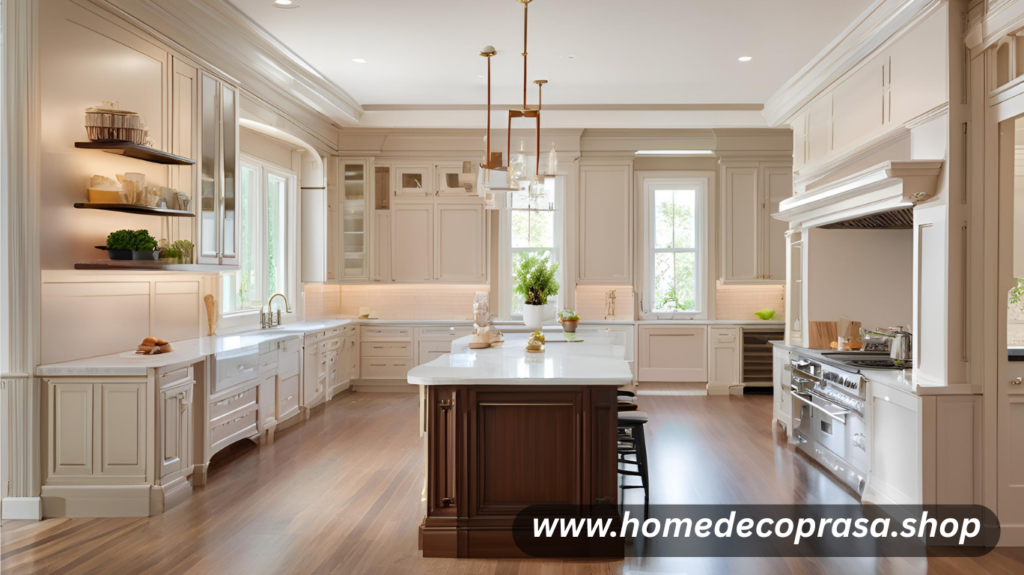
Incorporating architectural elements in open concept kitchens introduces depth and character to your design. By using moldings and paneling, you create visual interest that enhances the overall aesthetic.
- Range Hood Accents: Applying decorative paneling to the range hood can transform this functional feature into a stunning focal point. Consider intricate moldings or bold colors that align with your kitchen theme.
- Accent Walls: Create an accent wall behind the sink or stove area with shiplap, beadboard, or textured panels. This not only draws attention but also adds dimension to an otherwise flat space.
- Crown Molding: Adding crown molding at the junction of cabinets and ceilings gives a polished look while elevating the space.
These elements serve as both decor and structural enhancements, allowing you to express creativity while maintaining functionality in your open kitchen.
6. Optimize Storage with Built-In Cabinetry Solutions
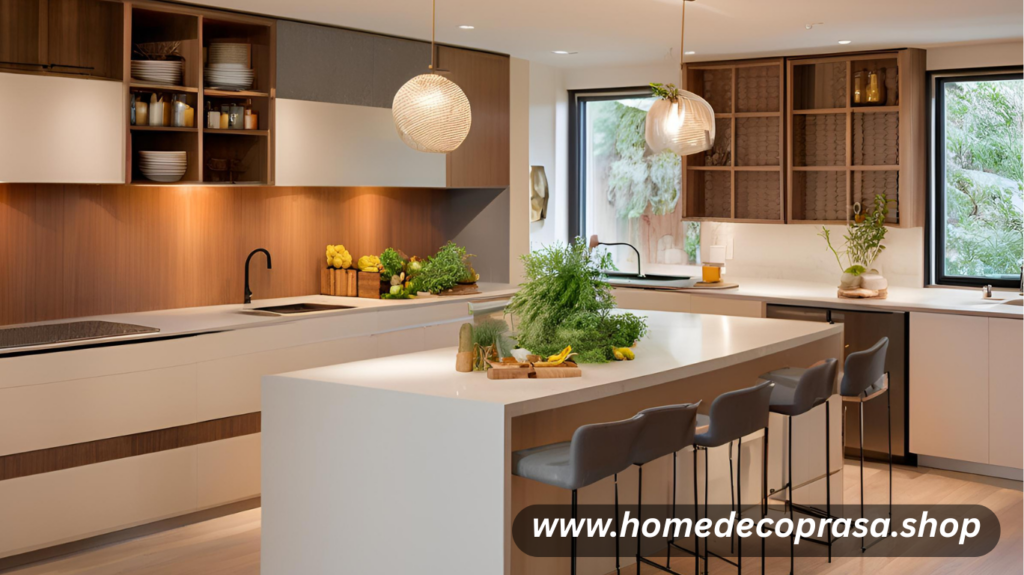
Maximizing storage is essential in small open kitchens. Consider these innovative storage solutions for compact spaces:
- Built-In Cabinetry: Custom cabinetry can be tailored to fit any nook or cranny, efficiently utilizing every inch of available space.
- Multi-Functional Designs: Incorporate features such as pull-out shelves or hidden compartments, allowing easy access while maintaining a clean aesthetic.
- Vertical Space Utilization: Extend cabinetry to the ceiling for added storage, perfect for less frequently used items.
Custom millwork enhances both functionality and aesthetics. It allows you to express your personal style while providing practical solutions:
- Unique Finishes: Choose materials and colors that complement your overall kitchen design, creating a cohesive look.
- Personalized Features: Integrate built-in lighting or decorative details that reflect your taste while maximizing usability.
Embracing these ideas can transform your kitchen into an organized and stylish space, making it an inviting area for cooking and entertaining.
7. Reflective Surfaces: A Bright Idea for Enhancing Space Perception
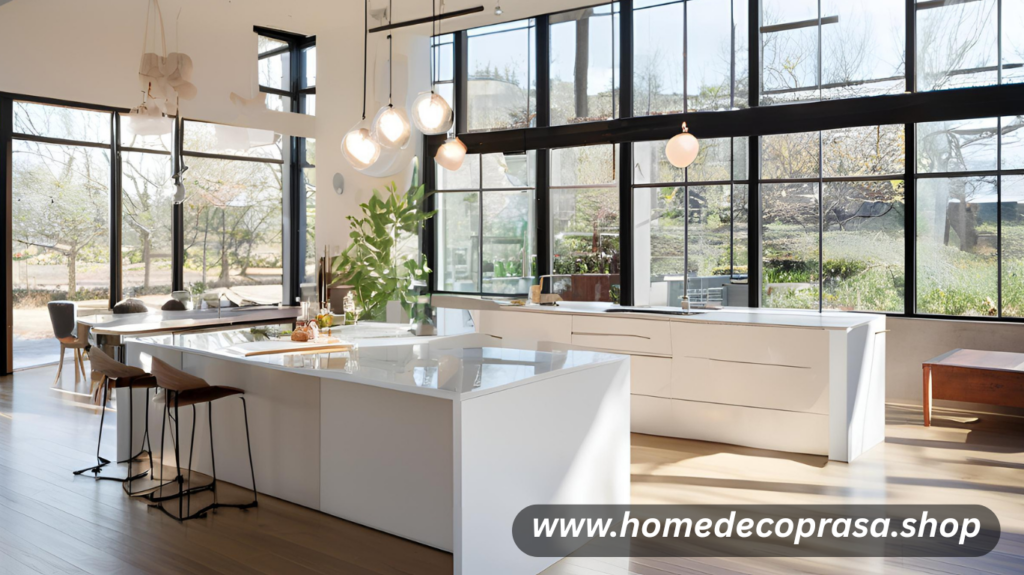
Incorporating reflective materials in kitchen design enhances the perception of space. Mirrored backsplashes and glossy finishes can significantly brighten up an open kitchen, creating an illusion of depth and openness.
1. Mirrored Backsplashes
These can reflect light and views, making the kitchen appear larger and more inviting. Choose designs that blend seamlessly with your color scheme.
2. Glossy Finishes
High-gloss cabinetry or countertops can amplify natural light, contributing to a vibrant atmosphere. Opt for finishes that are easy to clean while still maintaining aesthetic appeal.
Practical tips for using reflective surfaces effectively include:
- Limit reflective materials to key areas to avoid overwhelming the space.
- Combine with matte elements to create balance and prevent a sterile feel.
- Use accessories such as decorative mirrors or metallic accents strategically to enhance the overall design without cluttering.
Embracing these elements in modern open kitchen design can transform your cooking space into a stylish haven.
8. Curved Island Layouts: Where Style Meets Flow
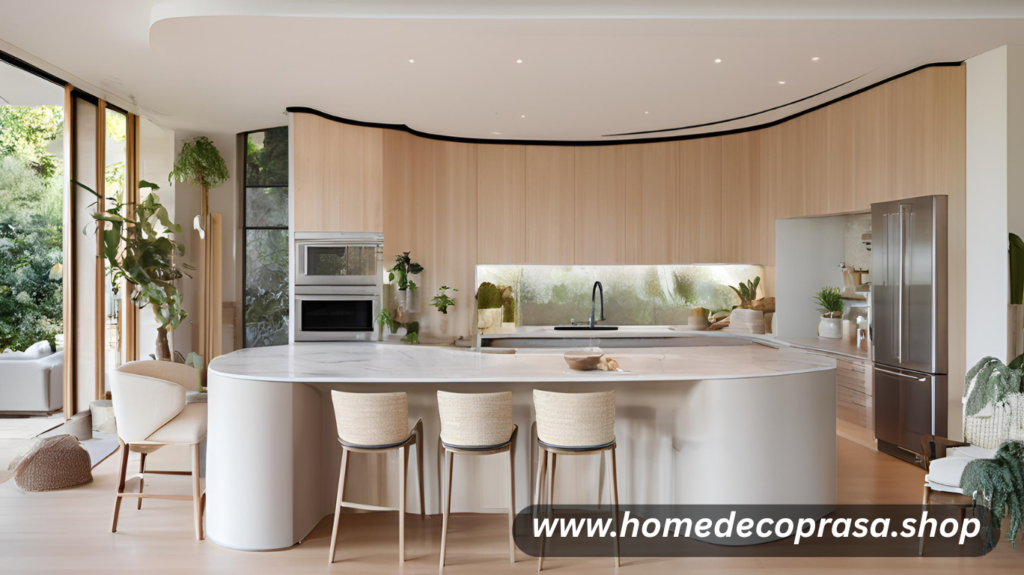
Curved island designs for open concept kitchens offer both aesthetic appeal and functional advantages. The gentle curves create a welcoming atmosphere, encouraging social interaction while providing an efficient workspace.
Benefits of Curved Island Layouts
- Improved Traffic Flow: Curved islands facilitate smoother movement throughout the kitchen. Unlike rigid corners, soft lines help navigate around the island, minimizing congestion during meal prep or entertaining.
- Visual Interest: The unique shape of a curved island serves as a focal point, breaking the monotony of traditional rectangular designs. It adds character and elegance to the space.
Inspiring Examples of Curved Island Layouts
- A modern kitchen featuring a sweeping curved island that integrates seating with built-in storage, allowing for both functionality and style.
- A cozy farmhouse design with a curved island topped with natural stone, harmonizing rustic charm with contemporary elements.
These layouts not only enhance usability but also elevate the overall design of your home.
9. Functional Furniture Choices That Work Harder for You
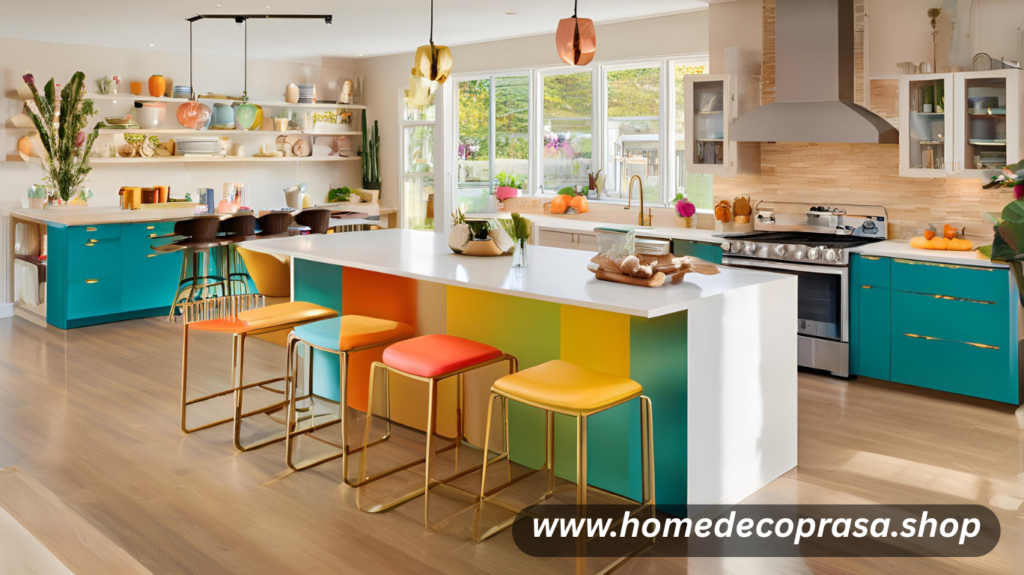
In compact open kitchens, selecting multipurpose furniture is crucial to maximizing space and functionality. The right pieces can seamlessly integrate into your lifestyle while enhancing the overall design.
- Versatile Dining Tables: Opt for tables that can be extended or retracted based on your needs. For intimate dinners, a smaller size is perfect, while guests can be accommodated easily when entertaining.
- Storage Ottomans: These dual-purpose items provide extra seating and hidden storage for kitchen essentials or dining accessories.
- Foldable Chairs: Easy to stow away, they offer additional seating without sacrificing valuable floor space.
- Kitchen Islands with Built-in Storage: These not only serve as work surfaces but also house cookbooks and utensils, keeping the area organized.
Incorporating functional furniture enhances the usability of your open kitchen while ensuring style remains a priority.
10. Conceal Appliances Within Cabinetry for a Sleek Look
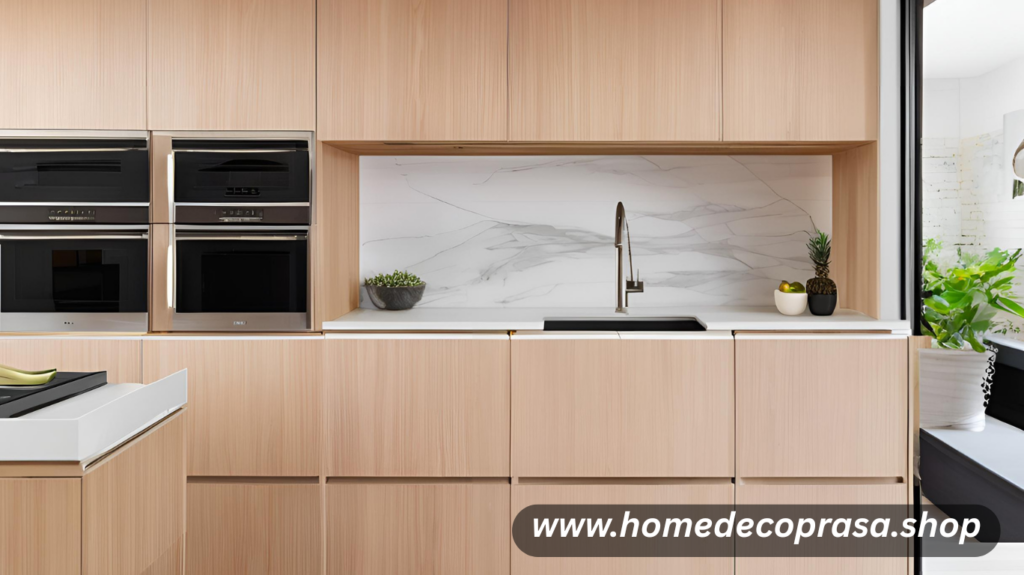
Integrating hidden appliances in modern open kitchens creates a streamlined aesthetic that enhances the overall design. Concealing appliances behind cabinetry achieves a clean look while maximizing counter space. This approach transforms bulky devices into seamless components of your kitchen.
Tips for Planning Appliance Placement
- Strategic Layout: Position frequently used appliances near prep areas to maintain functionality.
- Cabinet Depth: Ensure cabinets are deep enough to house larger appliances without protruding.
- Ventilation Considerations: Account for airflow when planning appliance placements, especially for ovens and refrigerators.
- Unified Design: Choose cabinet finishes that match or complement your kitchen’s color scheme to create a cohesive look.
Integrating hidden appliances not only boosts efficiency but also elevates the aesthetic appeal of your living space, making it feel more spacious and organized.
Conclusion
Embrace your personal style while implementing these innovative design strategies from our 10 open kitchen ideas. Thoughtful planning enhances both functionality and aesthetics, creating inviting living areas that reflect your taste.
Key takeaways include:
- Maximize space with L-shaped layouts and smart storage solutions.
- Enhance light by connecting indoor and outdoor spaces.
- Create flow through cohesive color schemes and architectural elements.
Transform your kitchen into a stylish hub for family and friends, ensuring every detail contributes to a harmonious environment.

21 Sage Green Nursery Ideas
Sage green has become a favorite color choice for nurseries, thanks to its calming and gender-neutral appeal. Whether you’re decorating for a baby boy, girl, or keeping it neutral, sage green provides a soothing backdrop for a cozy and stylish nursery. Here are 21 inspiring sage green nursery ideas to help you design the perfect space for your little one.
1. Sage Green Accent Wall
A sage green accent wall is a simple yet effective way to bring color and personality to your nursery. This shade provides a soft, tranquil backdrop that enhances the room’s overall ambiance. You can achieve this look using paint, wallpaper, or even textured wood paneling. Adding wall art, a baby name sign, or floating shelves can further personalize the space.

The beauty of an accent wall is that it allows you to keep the rest of the room neutral while still incorporating a pop of color. To create balance, pair it with white or light wooden furniture, ensuring the nursery remains bright and welcoming. This approach works well in both modern and traditional nursery designs.
2. Two-Tone Walls
A two-tone wall design using sage green can add depth and sophistication to your nursery. One common technique is to paint the lower half of the walls in sage green and the upper half in white or a light neutral color.
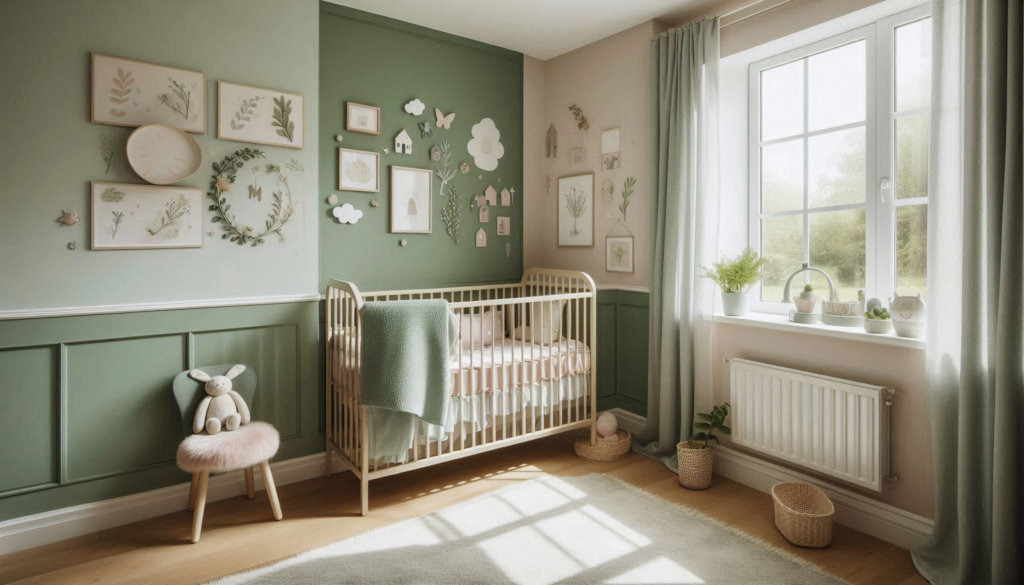
This method not only makes the room feel more spacious but also prevents darker shades from overpowering the space. Another creative approach is using wainscoting or paneling to separate the two colors, adding texture and an elegant touch.
The two-tone effect works particularly well in nurseries with high ceilings, as it visually breaks up large wall spaces. Soft furnishings, such as curtains and rugs, can complement the color scheme to tie the entire look together seamlessly.
3. Sage Green Crib
A sage green crib is a unique way to make the nursery stand out while maintaining a soft, neutral aesthetic.
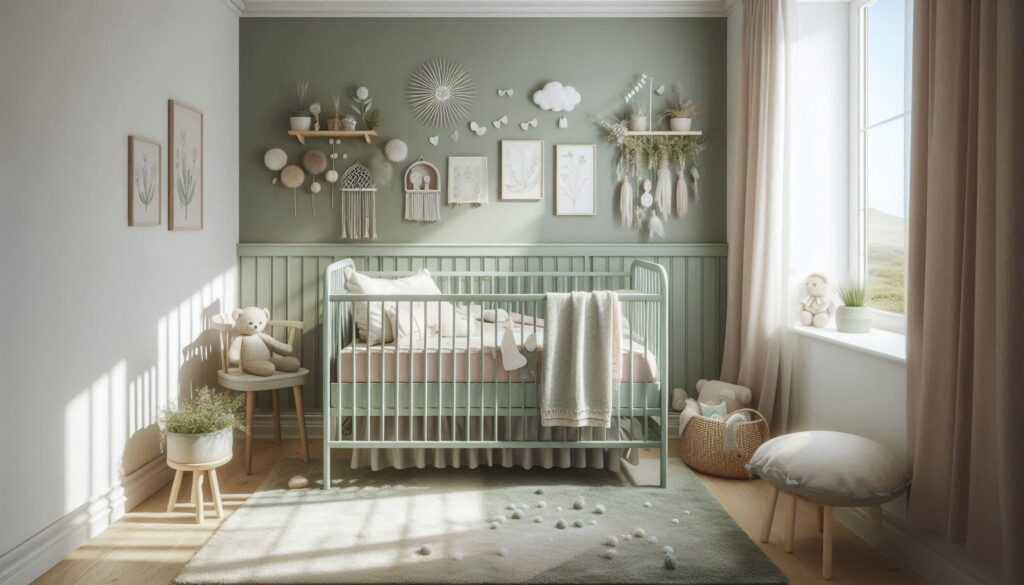
Unlike traditional white or wooden cribs, a sage green crib adds subtle character and charm. This color pairs beautifully with both classic and contemporary nursery decor, allowing you to style the room in multiple ways. You can balance the look with neutral-colored bedding, such as white, beige, or soft gray, to keep the space light and airy.
To complete the design, consider adding a matching dresser or rocking chair in a similar shade. The versatility of a sage green crib means it can grow with your child, blending seamlessly with different decor styles over the years.
4. Botanical Wall Decals
Botanical wall decals featuring leaves, ferns, and trees can enhance the natural and organic feel of a sage green nursery. These decals are an easy and removable way to decorate walls without the commitment of paint or wallpaper.
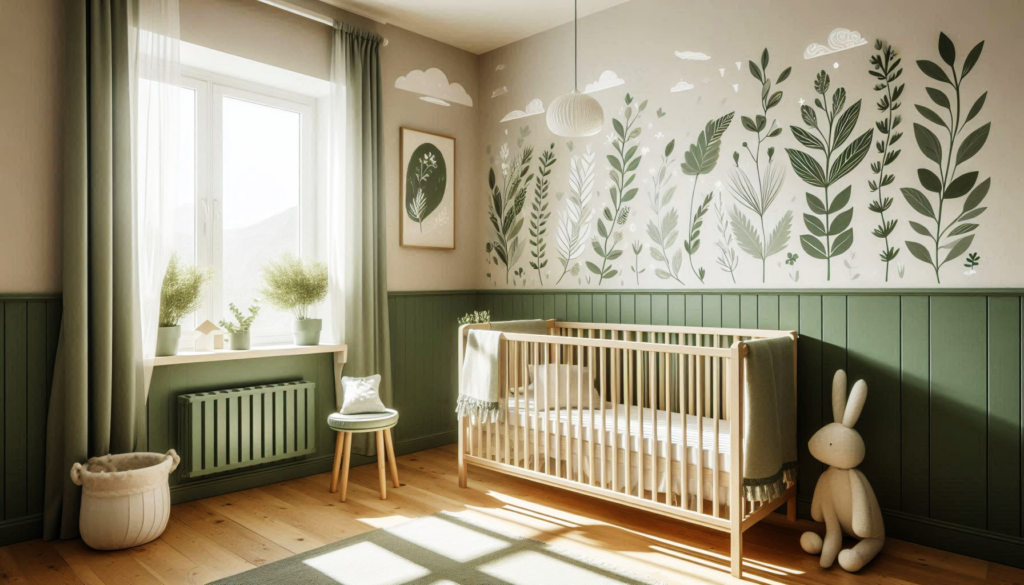
They create a serene, nature-inspired atmosphere that can be particularly soothing for newborns. If you prefer a more interactive design, consider a large tree decal with hanging animals or birds. Wall decals work well behind cribs, changing stations, or play areas, instantly adding visual interest. Choosing high-quality, matte-finish decals ensures they blend seamlessly with the wall, creating an elegant, hand-painted effect.
5. Cozy Sage Green Rug
A cozy sage green rug can be both a practical and stylish addition to your nursery. Not only does it provide a soft surface for tummy time and play, but it also helps define the space. When selecting a rug, consider materials like plush wool, cotton, or shag for extra comfort.

A round or rectangular rug placed at the center of the room can act as an anchor, tying together other decor elements. If you want to add subtle patterns, opt for a rug with floral, geometric, or abstract designs in muted tones. A high-quality, easy-to-clean rug will ensure durability and longevity, making it a functional yet beautiful feature in the nursery.
6. Earthy Wooden Accents
Wooden furniture and decor elements add warmth and texture to a sage green nursery, creating a balanced and inviting environment. Natural wood tones complement sage green beautifully, enhancing the organic and earthy feel of the space. You can incorporate wooden cribs, dressers, shelving units, and light fixtures to add depth and character.
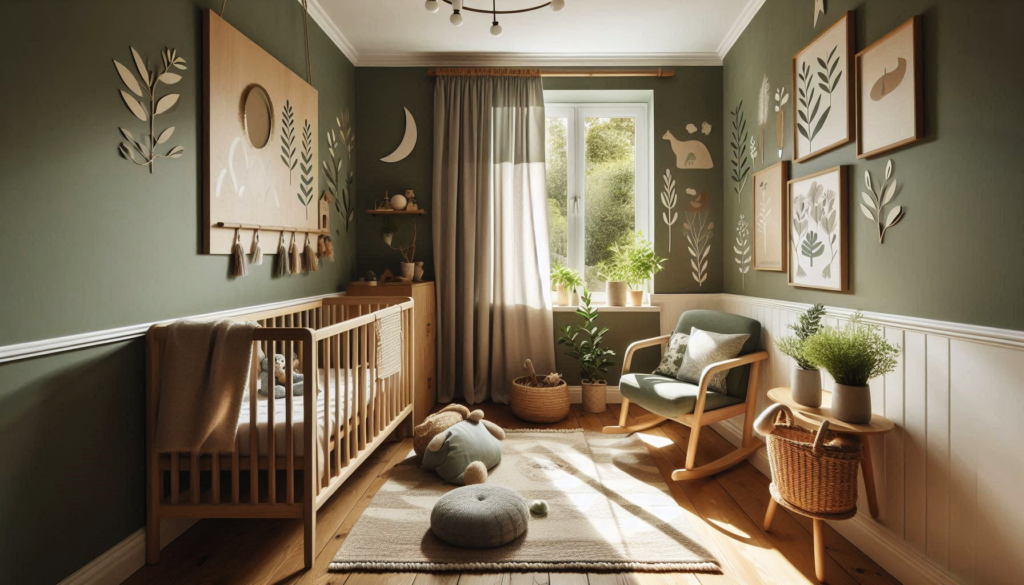
Even small touches like wooden picture frames, woven baskets, and handcrafted toys can enhance the overall aesthetic. Mixing different wood tones, from light oak to rich walnut, can create a more dynamic look. The combination of sage green and wooden elements results in a cozy and timeless nursery design.
7. Floral Sage Green Nursery
For a soft and feminine touch, a floral sage green nursery is a perfect choice. Floral wallpaper, bedding, or wall art can add a delicate and charming vibe to the room. Consider using soft pink, white, or lavender as accent colors to complement the sage green.
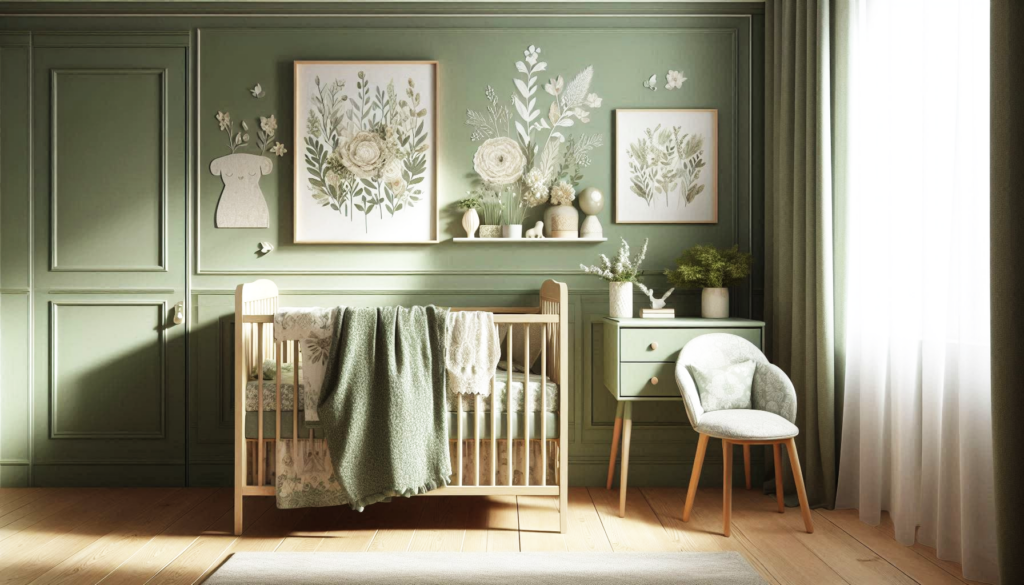
Floral patterns can be incorporated through curtains, crib sheets, or even a statement rug. A floral theme also allows for a whimsical and dreamy atmosphere, perfect for a baby girl’s nursery. To maintain balance, mix florals with simple furniture and neutral-colored accessories.
8. Sage Green and Gold Accents
Gold accents add an elegant and luxurious touch to a sage green nursery. This combination works well in both modern and vintage-inspired designs.

Incorporate gold elements through light fixtures, mirror frames, drawer handles, or even decorative accessories like picture frames and lamps. The metallic finish creates a beautiful contrast against the softness of sage green, adding warmth and sophistication. To keep the look cohesive, avoid overusing gold—small, thoughtful accents are enough to achieve a stylish, polished finish.
9. Minimalist Sage Green Nursery
A minimalist sage green nursery focuses on simplicity, clean lines, and functional design. This style is perfect for parents who prefer a clutter-free and calming environment. Opt for sleek, modern furniture with minimal detailing and stick to a limited color palette.
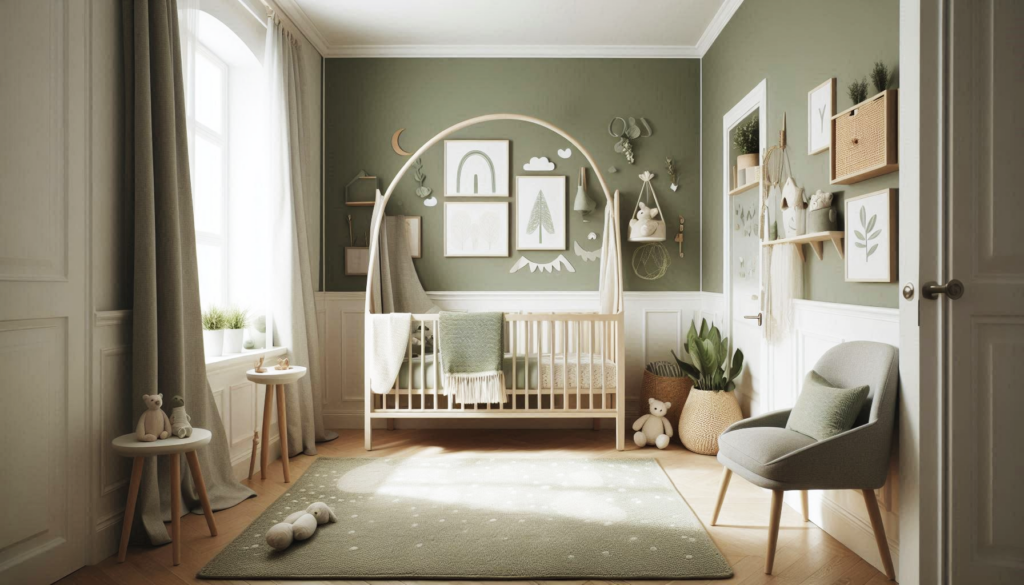
Keep decor to a minimum by selecting only a few statement pieces, such as a stylish crib, a cozy armchair, and a simple dresser. Soft textiles, like linen curtains and a textured rug, can add depth without overwhelming the space. A minimalist approach ensures that the nursery remains timeless and adaptable as your baby grows.
10. White and Sage Green Combo
Pairing sage green with white creates a fresh and airy nursery design. White furniture, such as a crib, changing table, or bookshelves, stands out beautifully against sage green walls.

This color combination enhances natural light, making the space feel open and bright. White and sage green also allow for easy layering with other neutral elements, such as soft beige or gray. This classic pairing ensures a soothing and elegant nursery that remains stylish over time.
11. Woodland-Themed Nursery
A woodland-themed nursery blends sage green with nature-inspired elements for a cozy, adventurous space. Decorate with woodland creatures like foxes and bears through wall art, bedding, and plush toys.

Complement the look with wooden furniture, earthy tones, and a forest mural or tree-patterned wallpaper. Natural materials like jute rugs and wooden shelves enhance the rustic feel. A soft wool blanket in green tones completes the serene, nature-filled ambiance, creating a magical environment perfect for your little one.
12. Woven Baskets for Storage
Sage green woven baskets provide stylish and functional storage for toys, blankets, and baby essentials. Their natural texture adds warmth to the nursery while keeping items neatly organized.
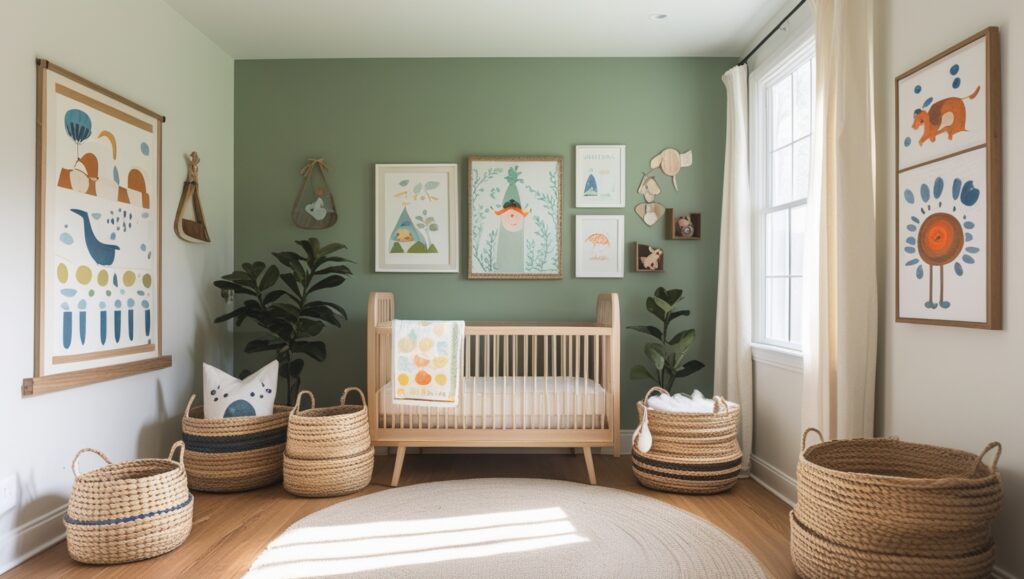
Available in various sizes, they can be stacked, placed on shelves, or used as hampers. Durable and versatile, these baskets blend seamlessly into different decor styles, from minimalist to rustic. Their soft green hue enhances the room’s calming atmosphere while offering a practical storage solution that transitions as your child grows.
13. Soft Sage Green Curtains
Soft sage green curtains bring color and functionality to a nursery, creating a peaceful ambiance. Light-filtering fabric softens natural light, making the space feel cozy and dreamy.
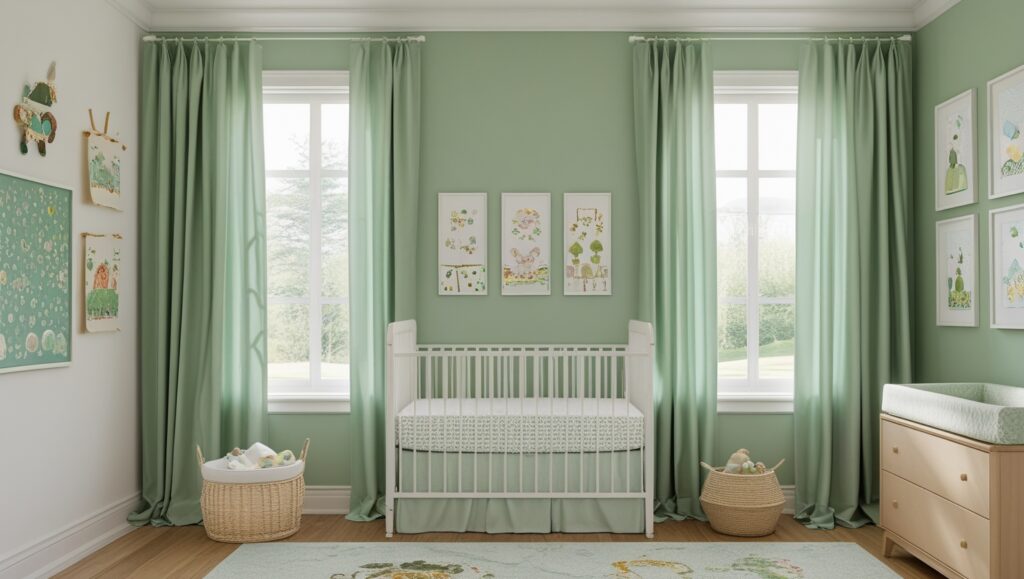
The muted green shade complements neutral or bold color schemes, adding warmth without overpowering the decor. Available in solid colors or subtle patterns, these curtains pair beautifully with sage green accents and woodland themes. Beyond aesthetics, they provide privacy and light control, helping to create a soothing environment for restful sleep.
14. Monochrome Sage Green Theme
A monochrome sage green nursery embraces harmony and tranquility by layering different shades of green. Walls, bedding, and furniture in varied sage tones create depth while maintaining a cohesive look.
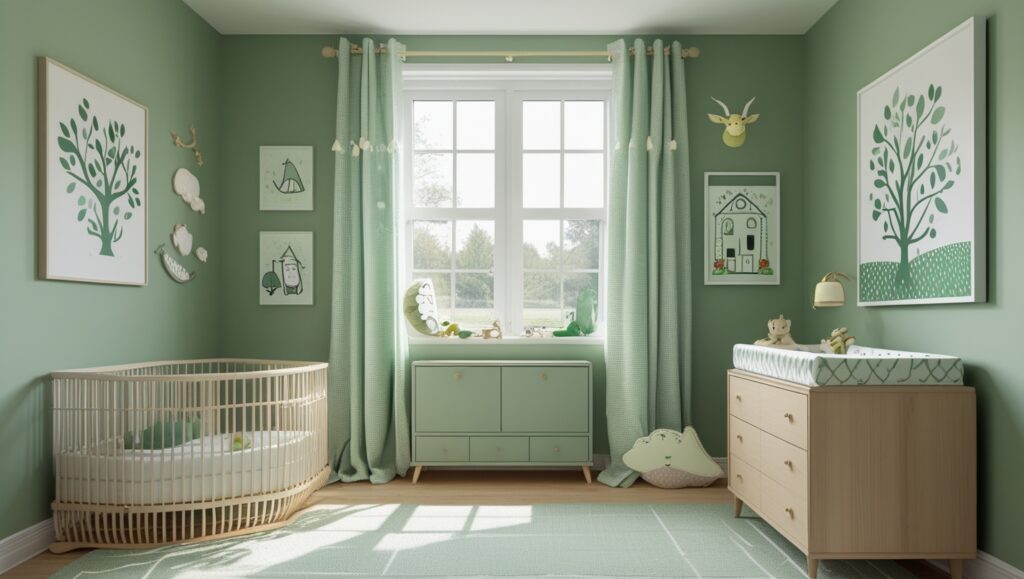
Textured elements like velvet cushions, woven baskets, and jute rugs enhance the aesthetic. Metallic accents in gold or silver add a touch of sophistication. This minimalist yet serene design fosters a peaceful atmosphere, ideal for restful sleep and relaxation. A monochrome sage green theme offers timeless elegance with a fresh, modern twist.
15. Vintage Sage Green Nursery
A vintage sage green nursery blends nostalgic charm with a soothing color palette. Antique-style furniture, distressed wood cribs, and delicate lace or floral accents enhance the vintage aesthetic.
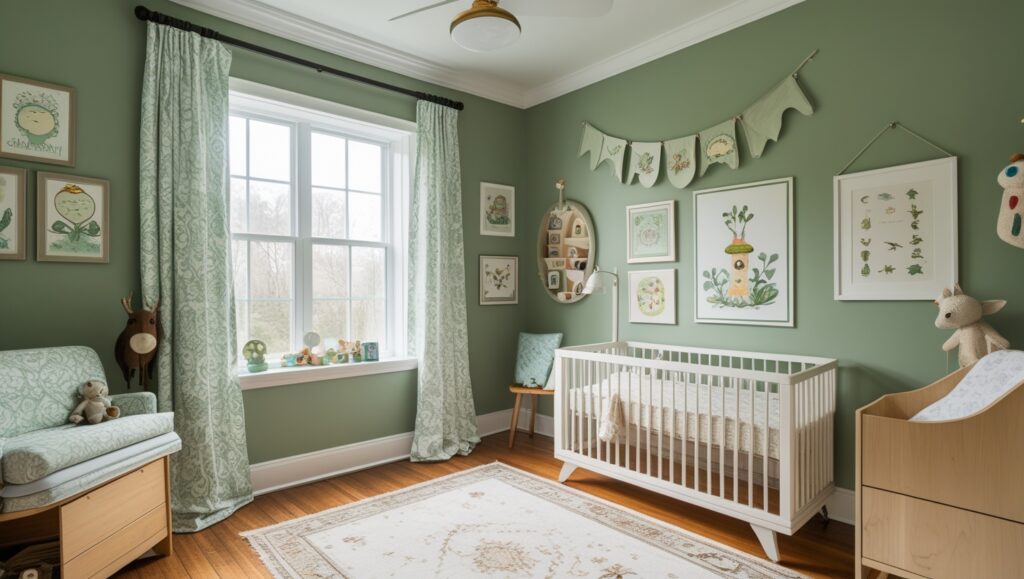
Soft textiles like crocheted blankets and heirloom quilts add warmth and texture. Incorporate vintage-inspired decor, such as old-fashioned rocking horses or antique-style lamps, to complete the look. The muted green hue softens the overall design, creating a cozy, timeless nursery that grows beautifully with your child over the years.
16. Farmhouse-Inspired Nursery
A farmhouse-inspired nursery with sage green accents offers a warm, rustic aesthetic. Distressed wood cribs, burlap textiles, and linen bedding create a cozy, country feel.
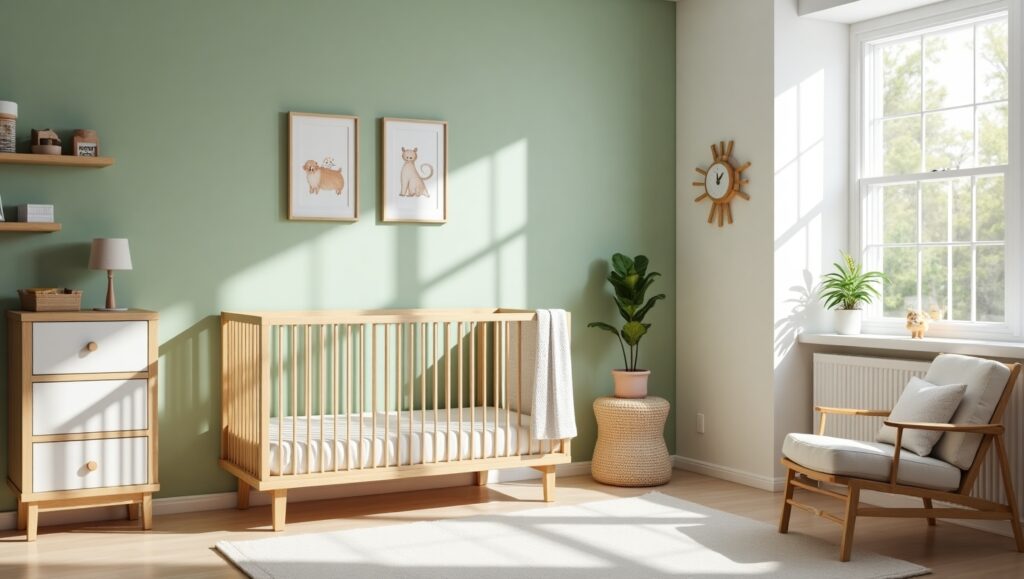
Soft green walls or curtains pair beautifully with wooden furniture, enhancing the natural and earthy vibe. Vintage-inspired decor, like mason jar lights and farmhouse signs, adds charm without overcrowding the space. This practical yet stylish theme embraces simplicity, warmth, and comfort, making it a perfect choice for parents who love a country-inspired, nurturing nursery.
17. Safari-Themed Nursery
A safari-themed nursery in sage green creates a playful yet serene environment. Pair soft green tones with safari animals like giraffes, elephants, and lions in wall art, bedding, and plush toys.
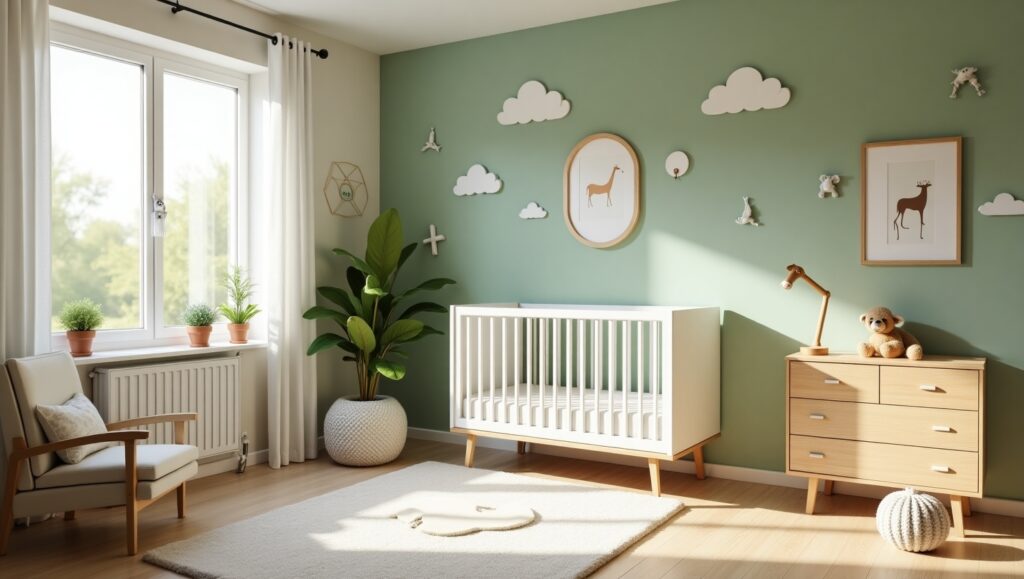
Complement with warm browns, tans, and natural textures like bamboo furniture or woven baskets. Palm leaf prints, jungle-inspired decor, and plush jungle animals bring the safari adventure to life. The muted green shade keeps the space calming while fostering an atmosphere of curiosity and exploration for your little adventurer.
18. Whimsical Sage Green Canopy
A whimsical sage green canopy transforms a nursery into a dreamy retreat. Whether draped over a crib or reading nook, its soft, flowing fabric adds a touch of magic.
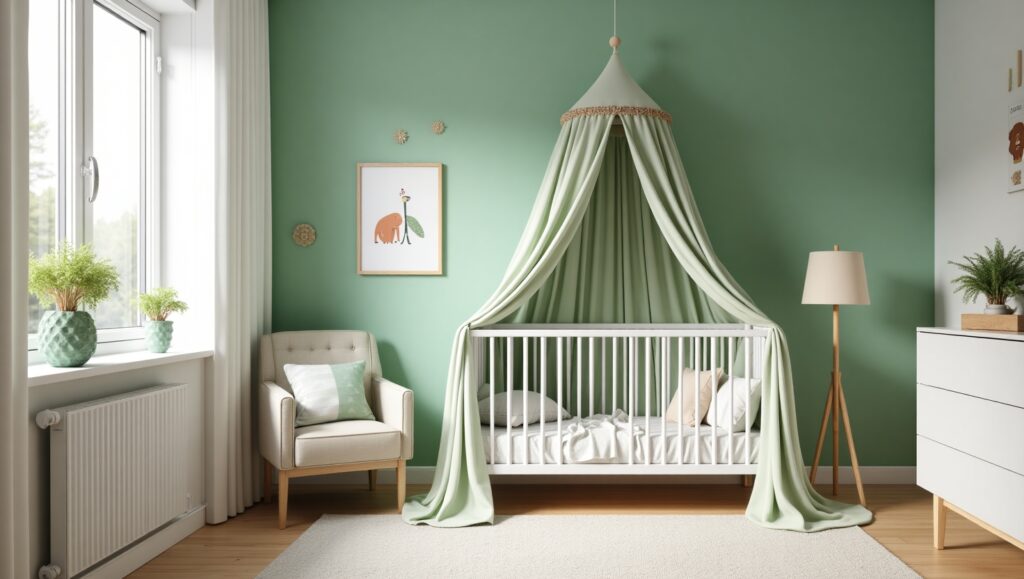
The muted green color enhances the room’s calming ambiance while blending seamlessly with various themes. Fairy lights inside the canopy create a cozy, glowing effect. Pair with plush cushions and soft rugs for added comfort. This enchanting feature makes the nursery feel cozy, private, and ideal for both sleep and play.
19. Sage Green Personalized Wall Art
Personalized sage green wall art adds a unique and sentimental touch to a nursery. Custom prints featuring your baby’s name, birth date, or meaningful quotes blend seamlessly with various decor styles. Choose from framed prints, wooden signs, or hand-painted canvases with soft green tones.
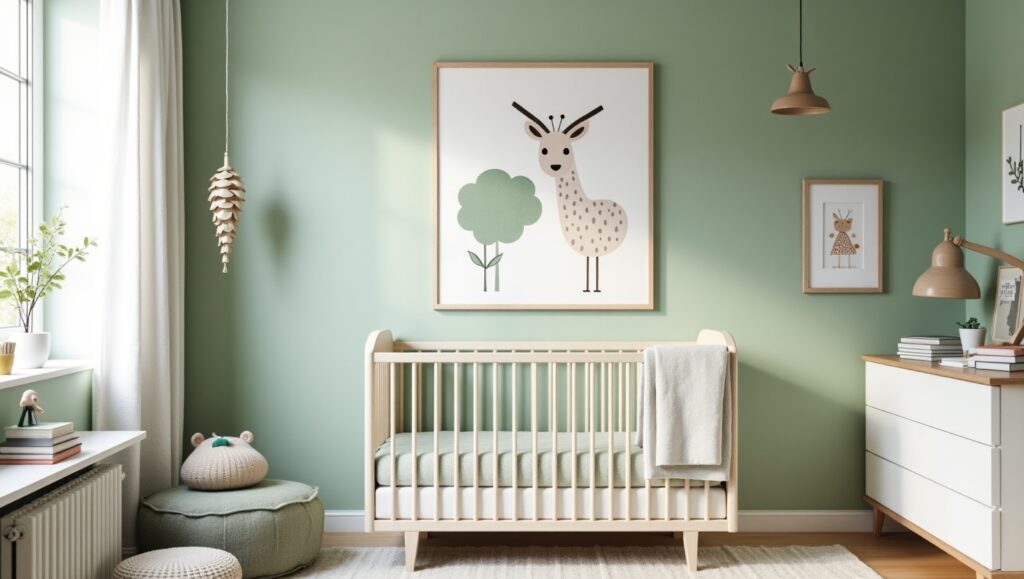
The subtle color works well with both minimalist and playful themes. Beyond aesthetics, personalized wall art serves as a keepsake, making the nursery feel special while complementing the overall serene and inviting atmosphere.
20. Cozy Reading Nook
A cozy reading nook with sage green accents fosters a love for books and quiet bonding moments. A comfy rocking chair with plush cushions serves as the centerpiece, accompanied by a soft rug and warm throw blanket.
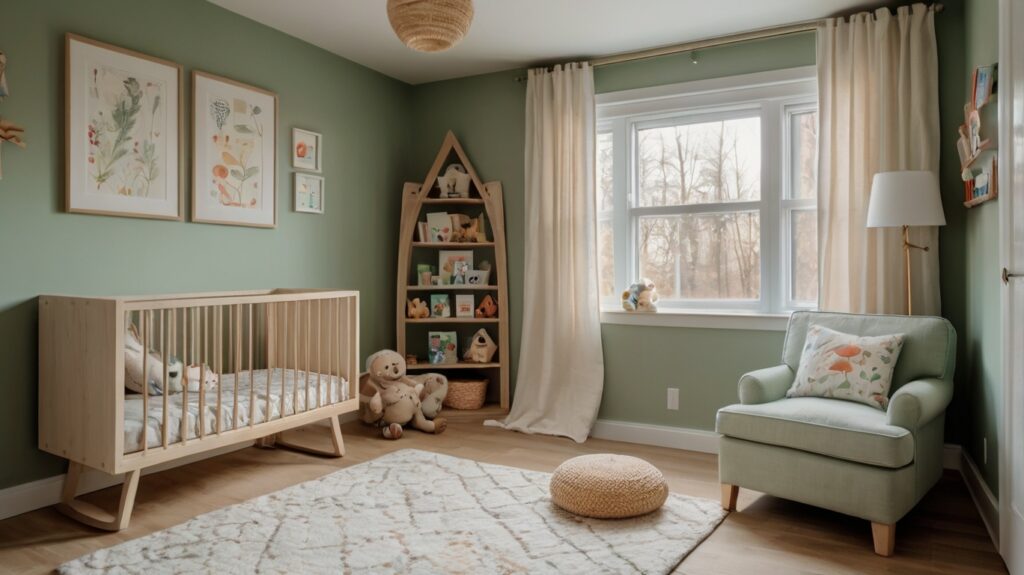
A nearby bookshelf keeps favorite stories within reach, while soft lighting from a floor lamp or fairy lights sets a soothing mood. Thoughtfully designed, this reading corner creates an inviting retreat where parents and children can enjoy precious moments together in a peaceful space.
21. Sage Green Ceiling
A sage green ceiling adds an unexpected yet charming touch to a nursery. This soft, earthy shade creates a cozy, enclosed feel, making the room feel warm and inviting. It works well with light-colored walls and darker furniture for contrast.
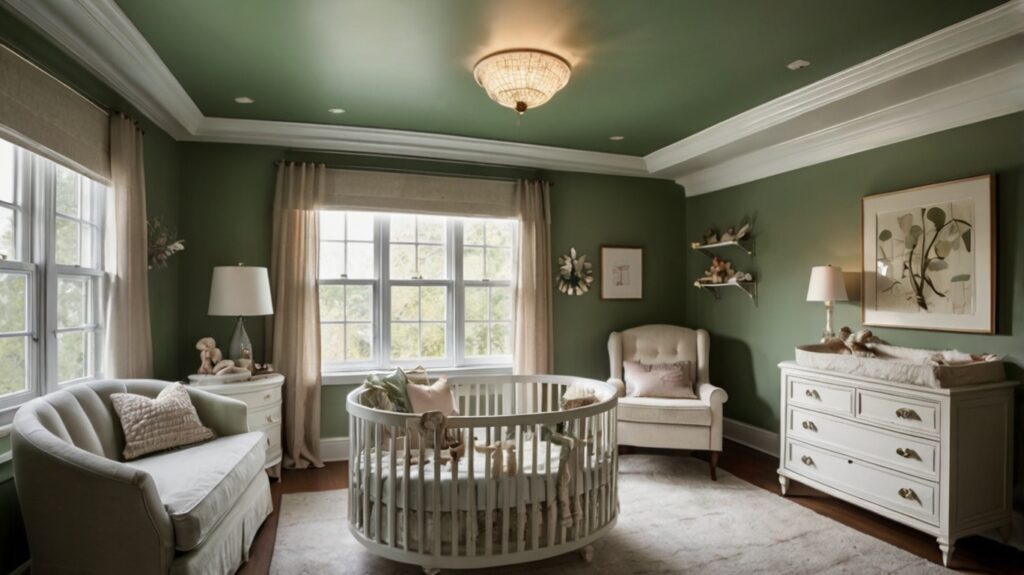
Adding subtle patterns or stencils can enhance visual interest. Ideal for parents seeking a unique but calming design, a sage green ceiling fosters serenity and imagination, turning the nursery into a soothing sanctuary for rest and play.

